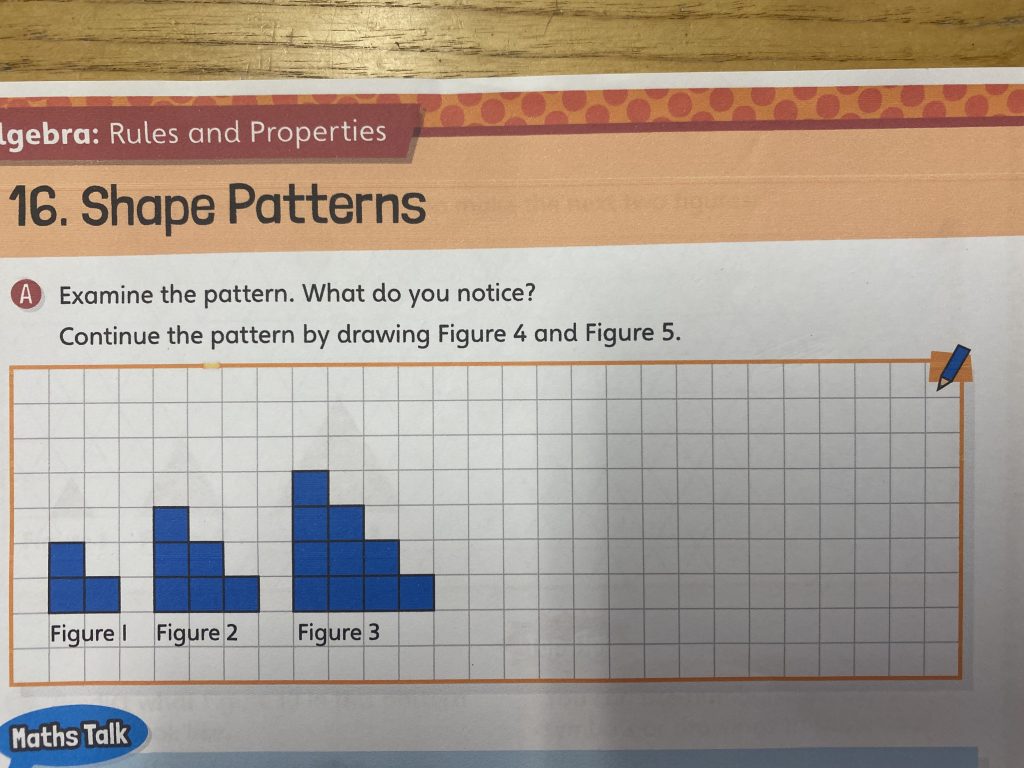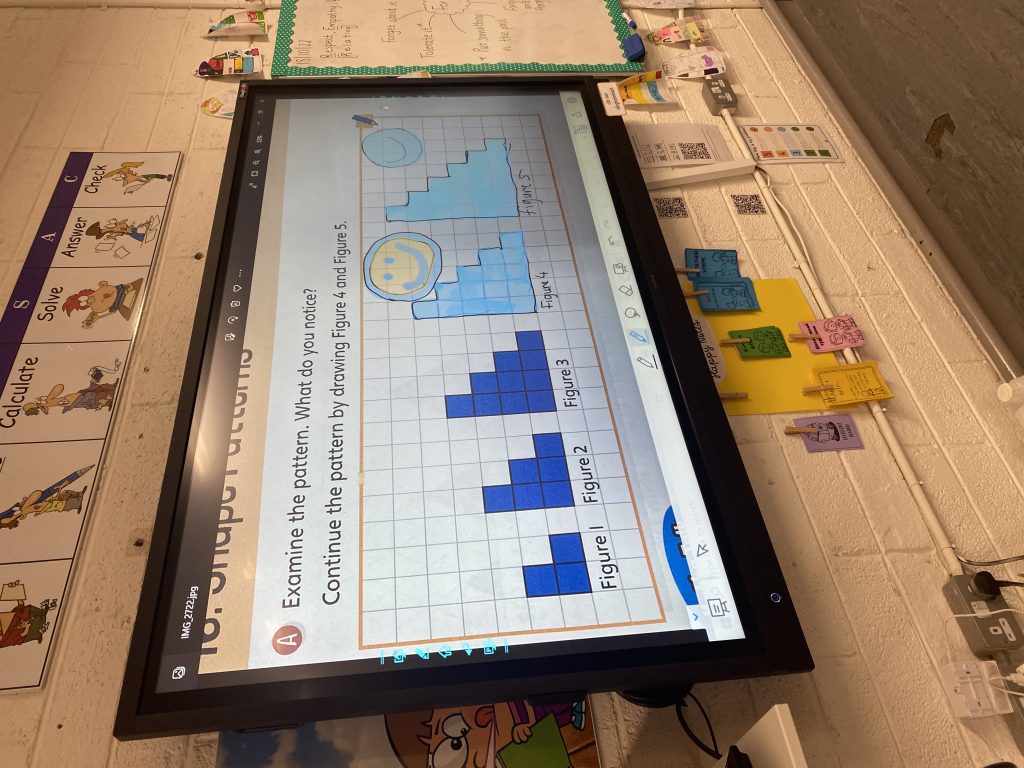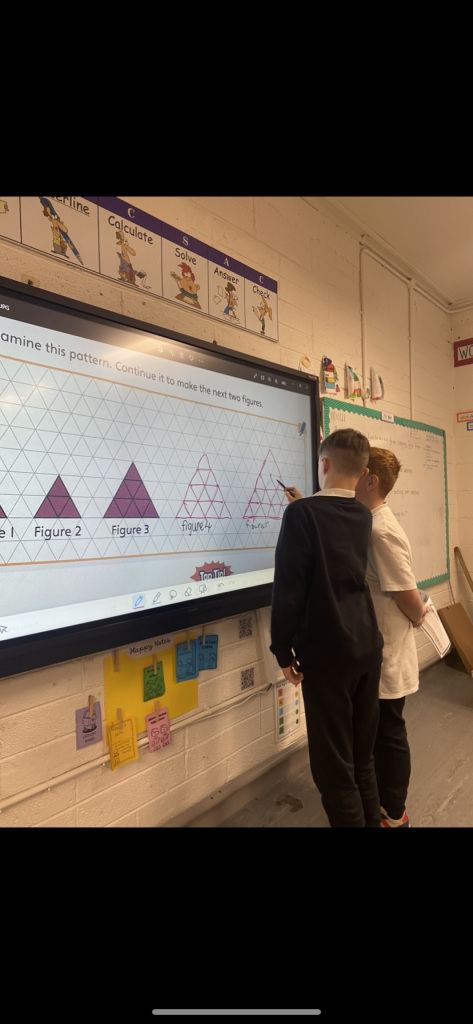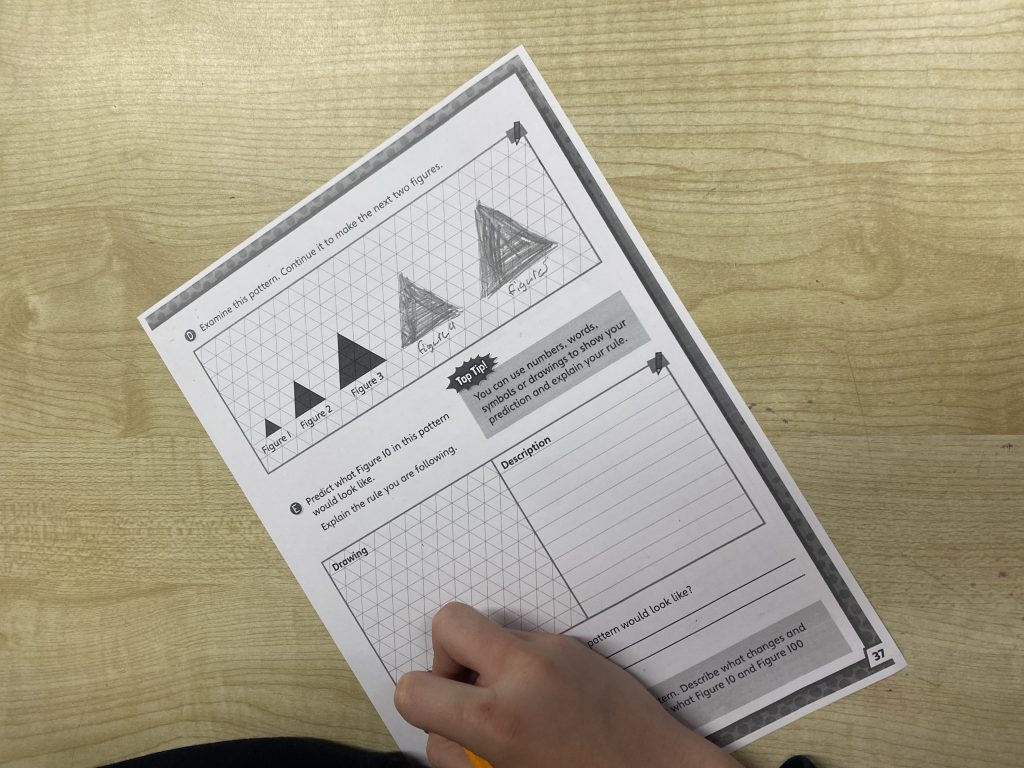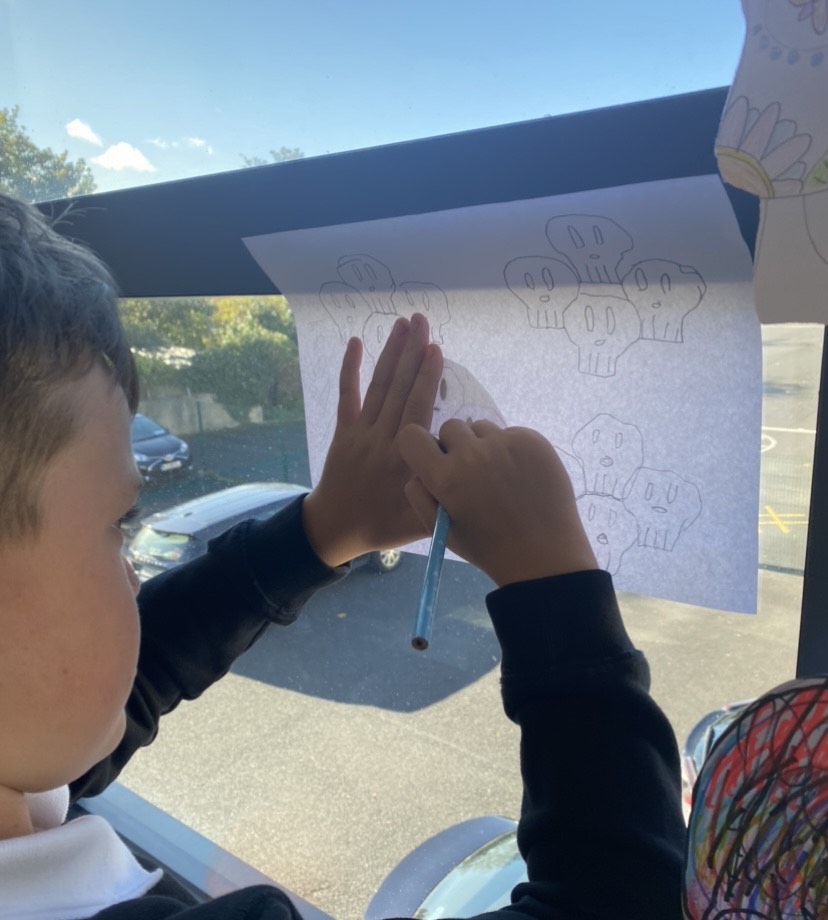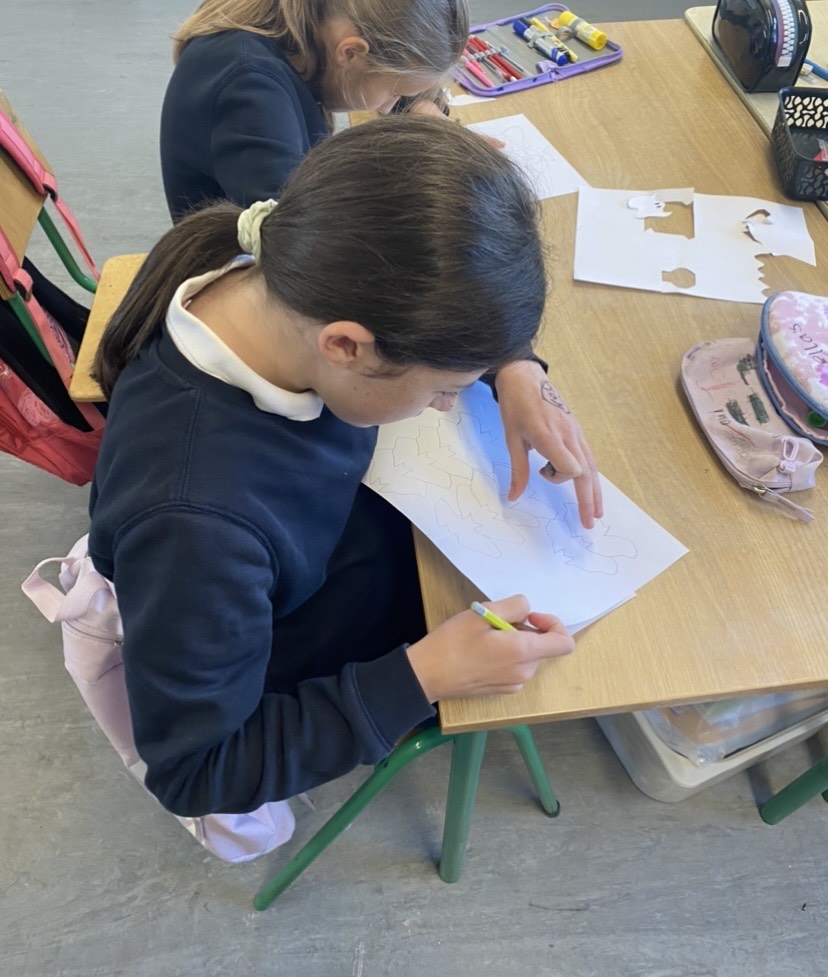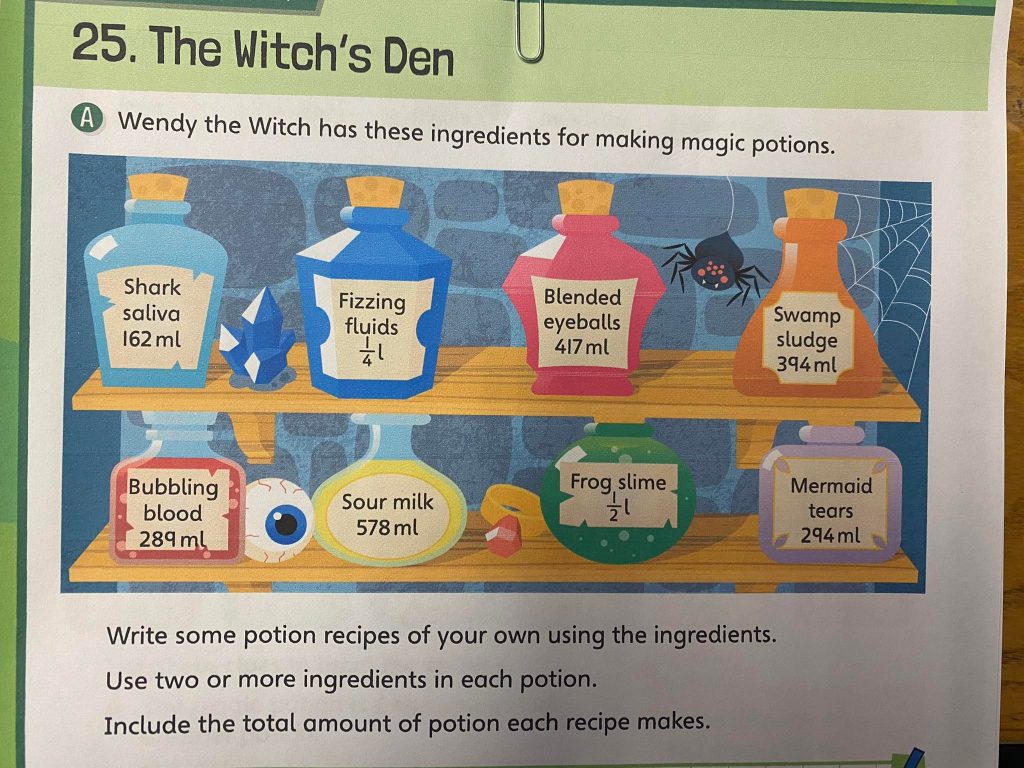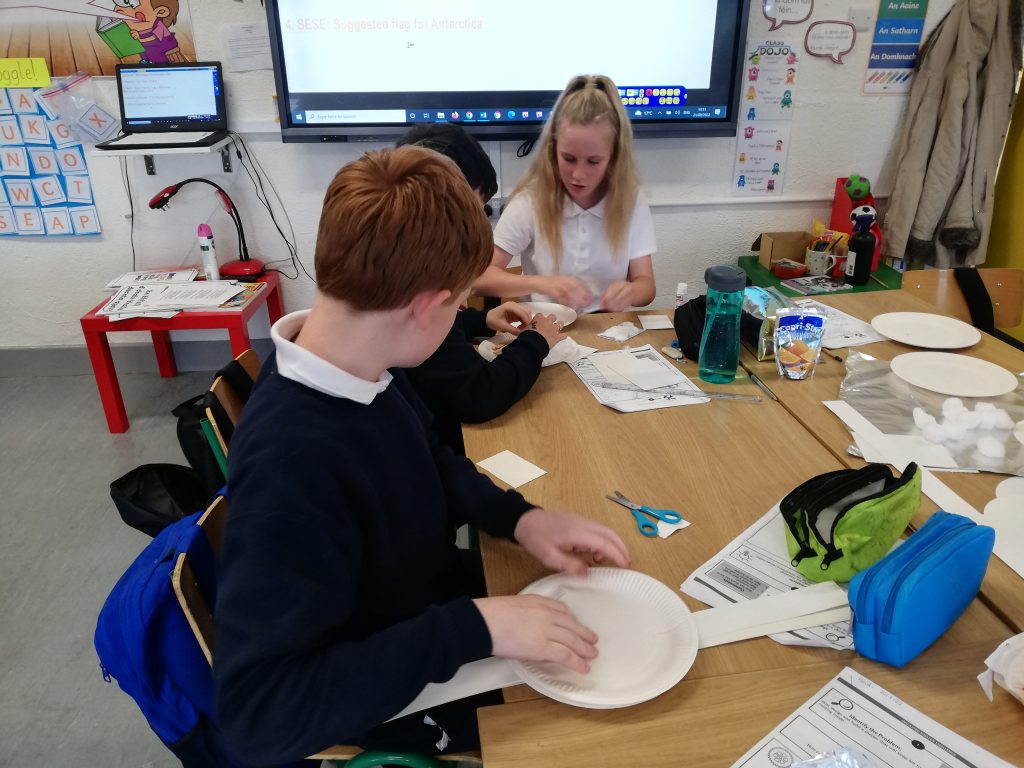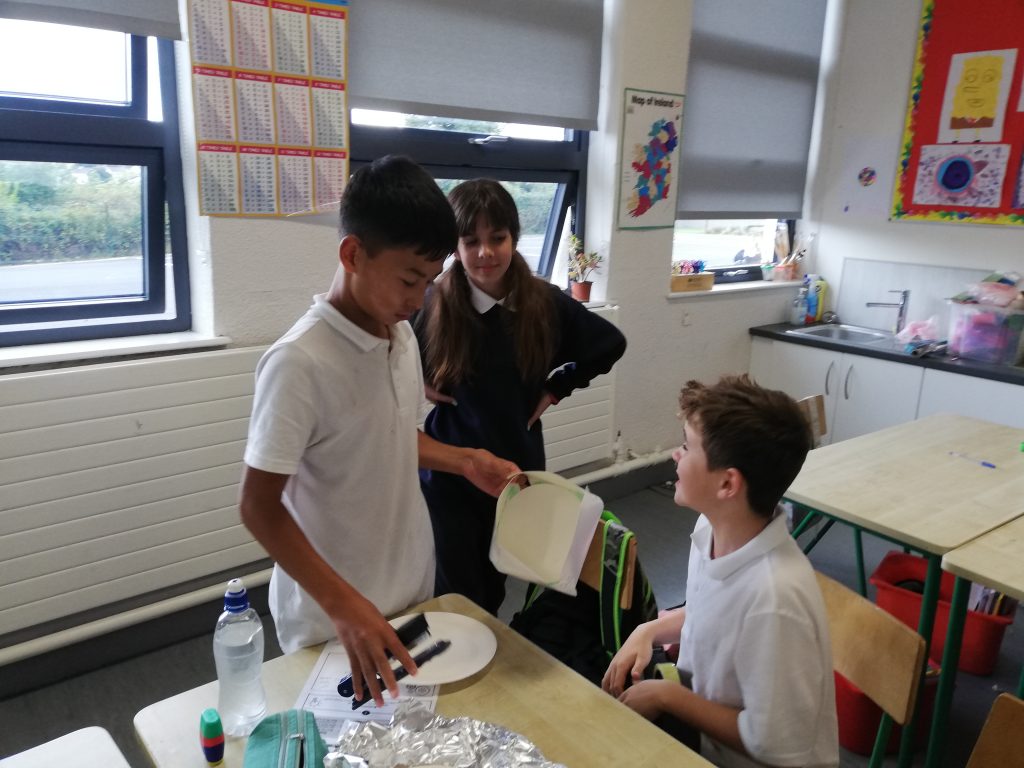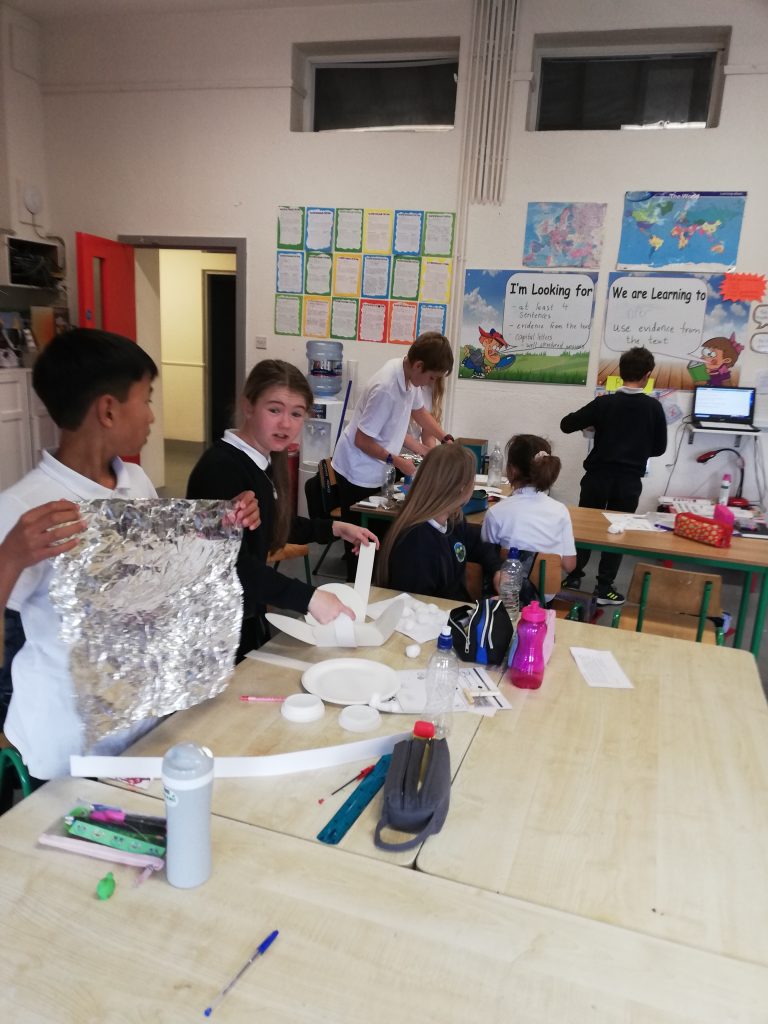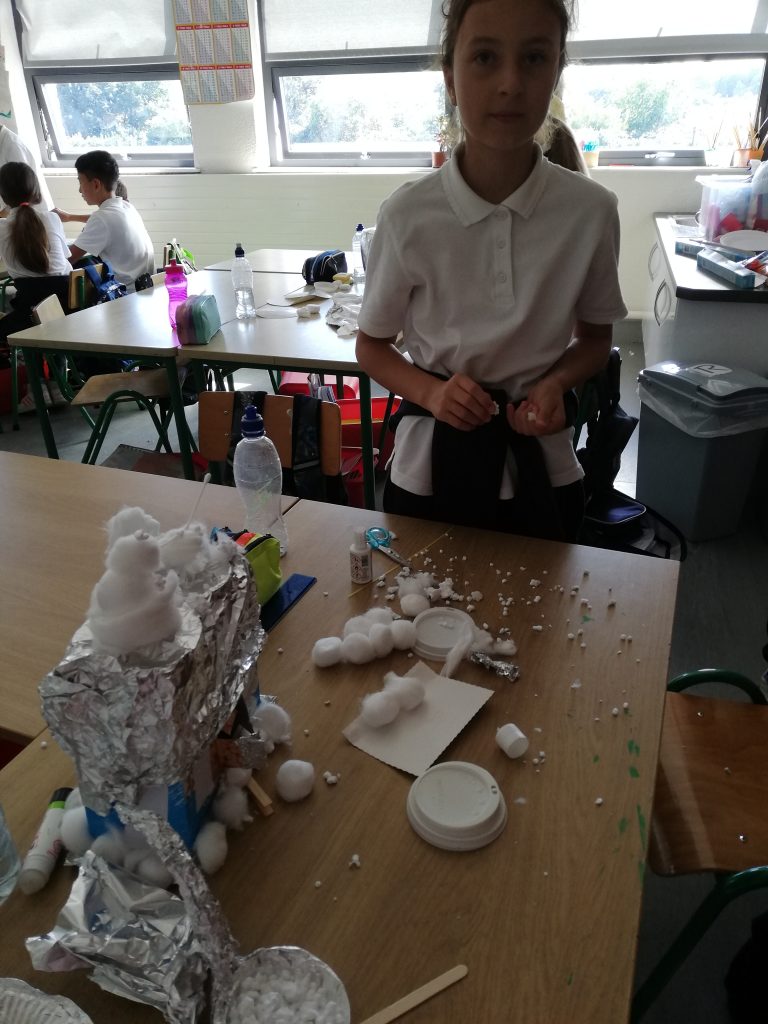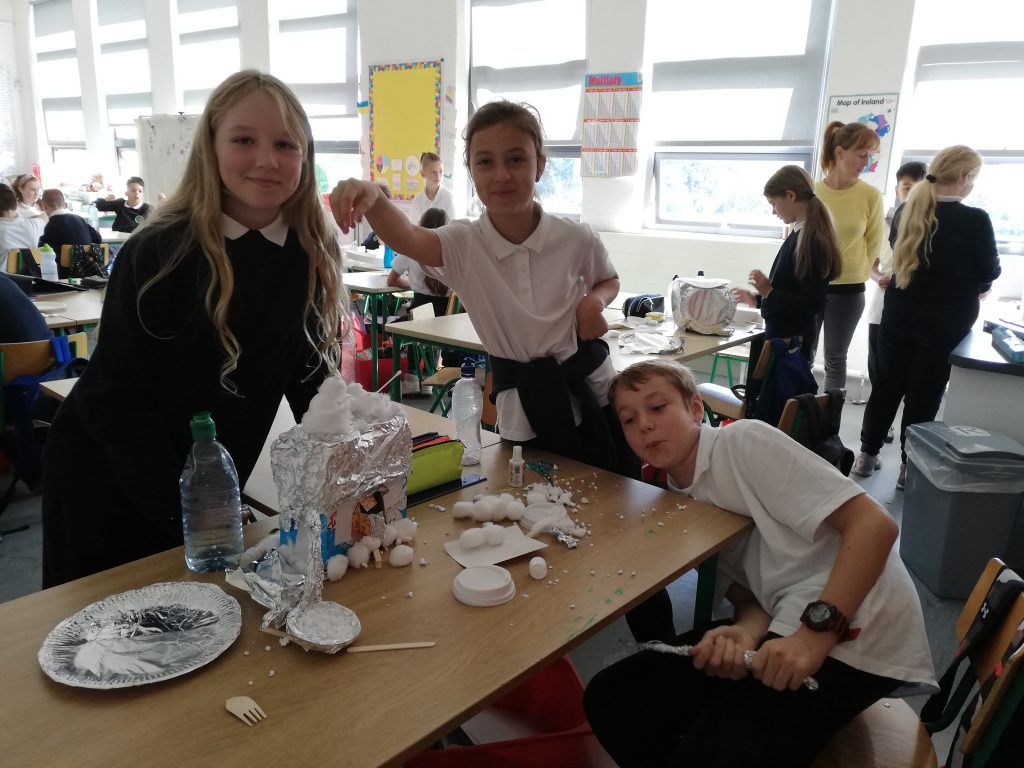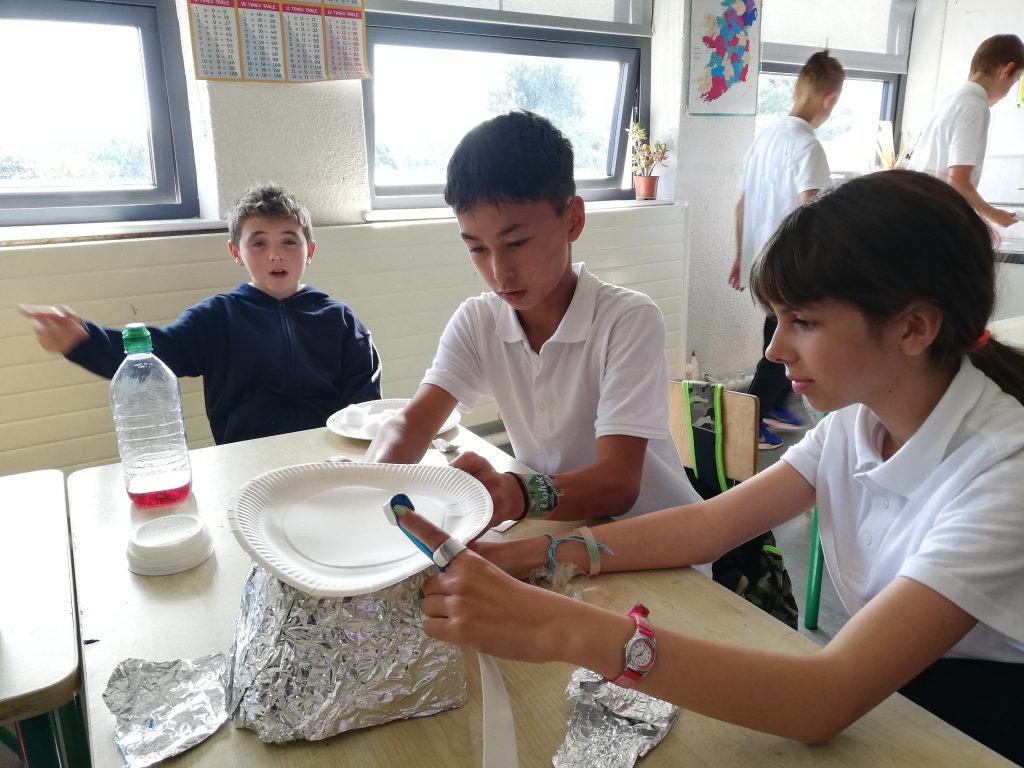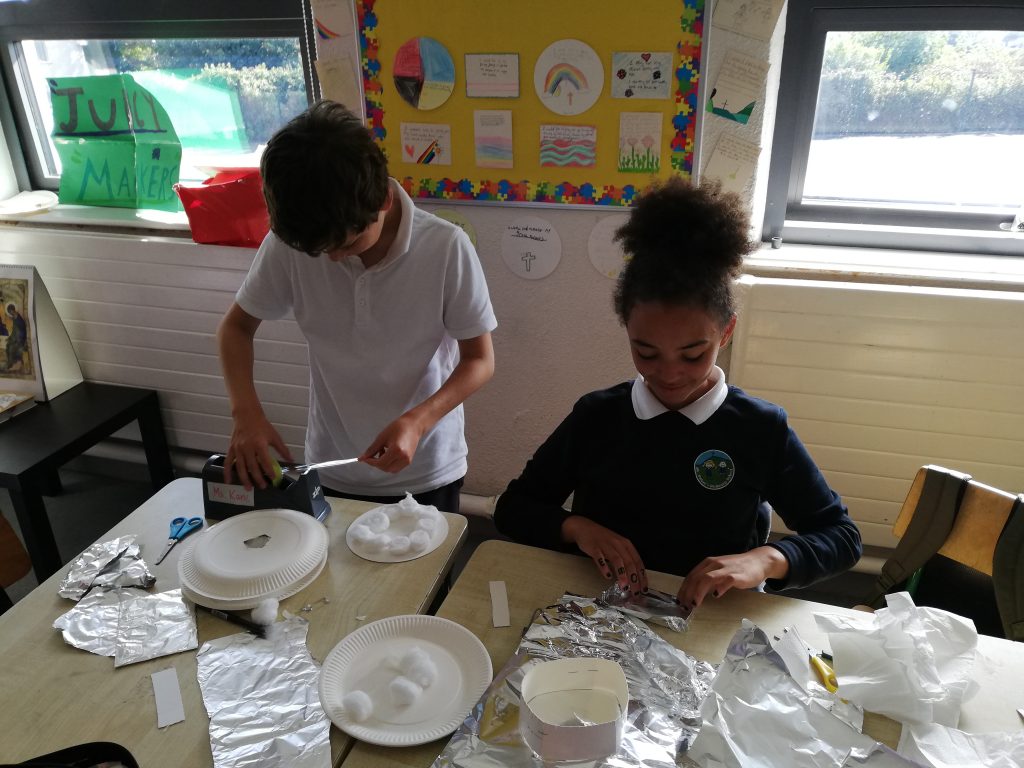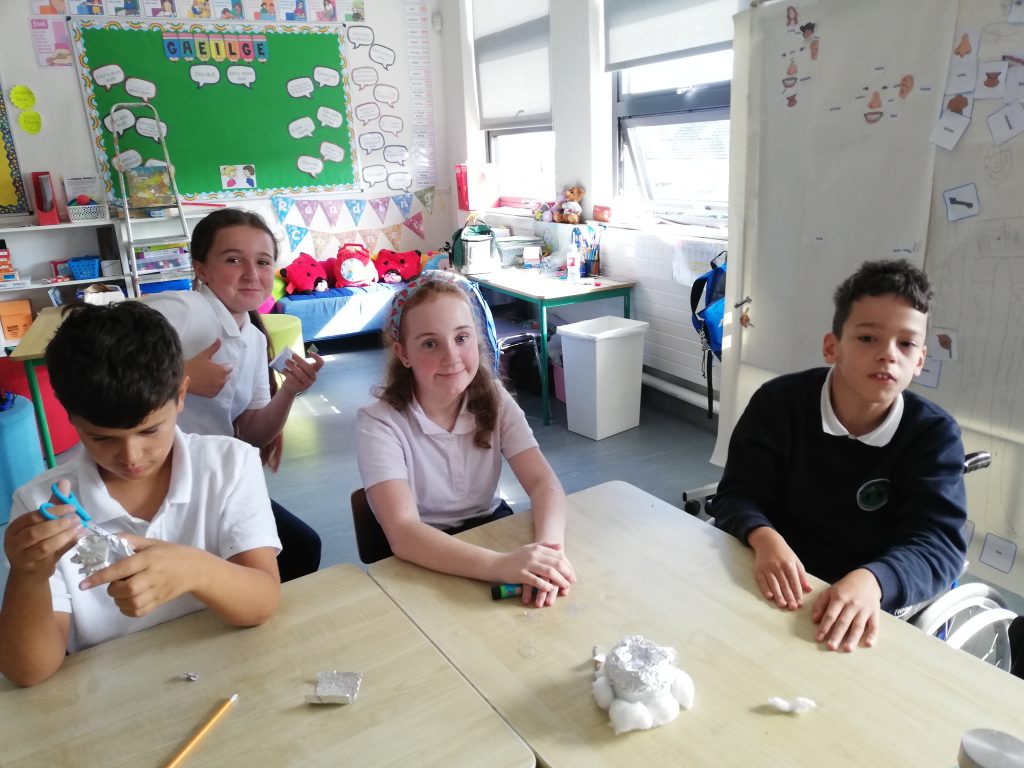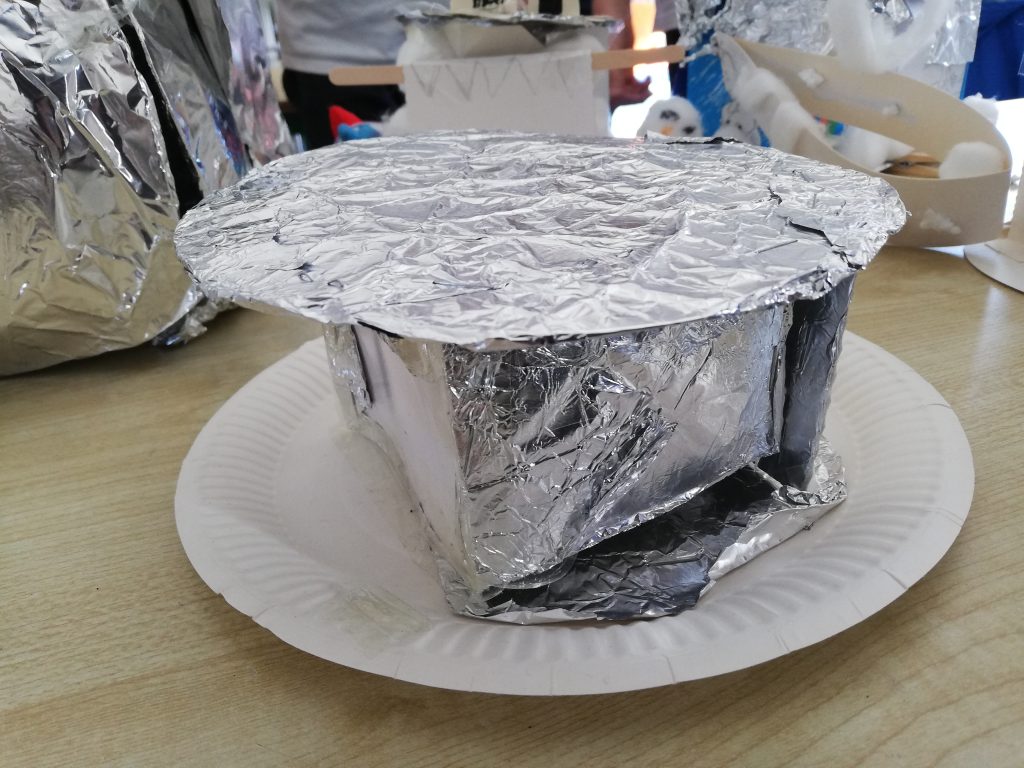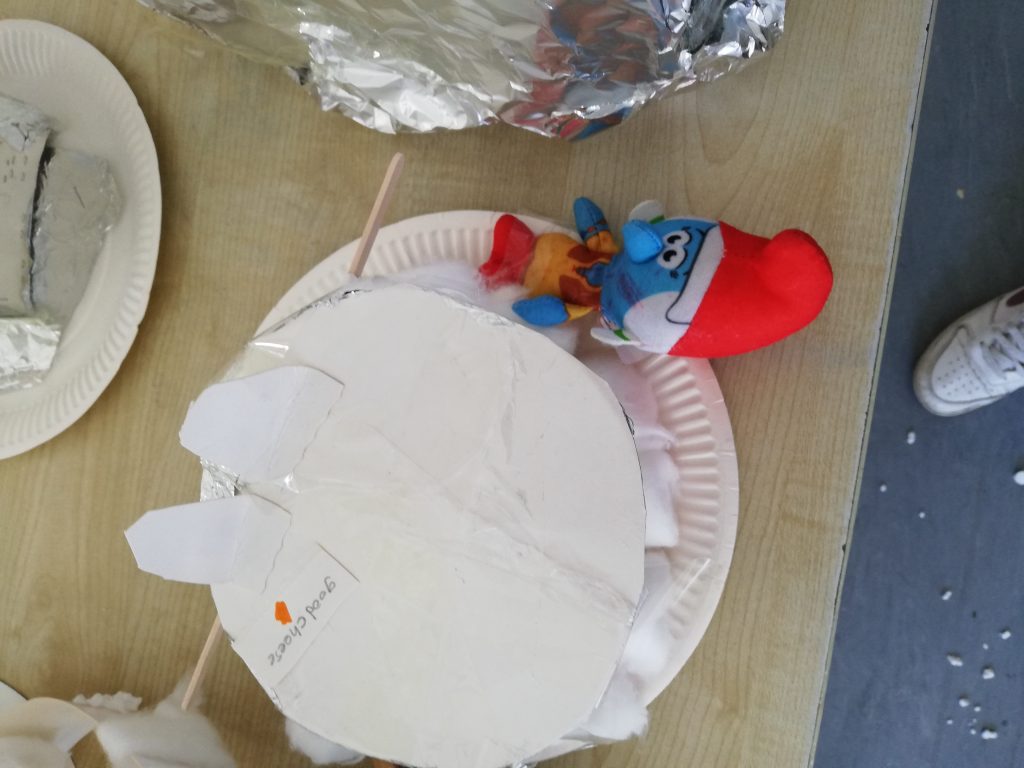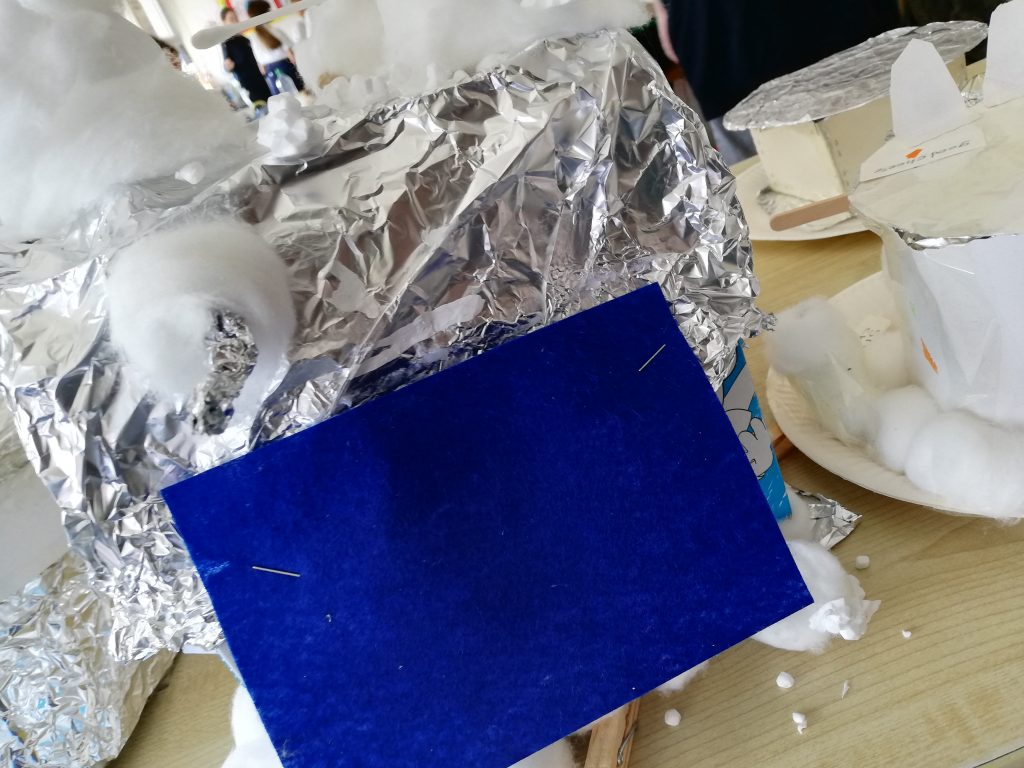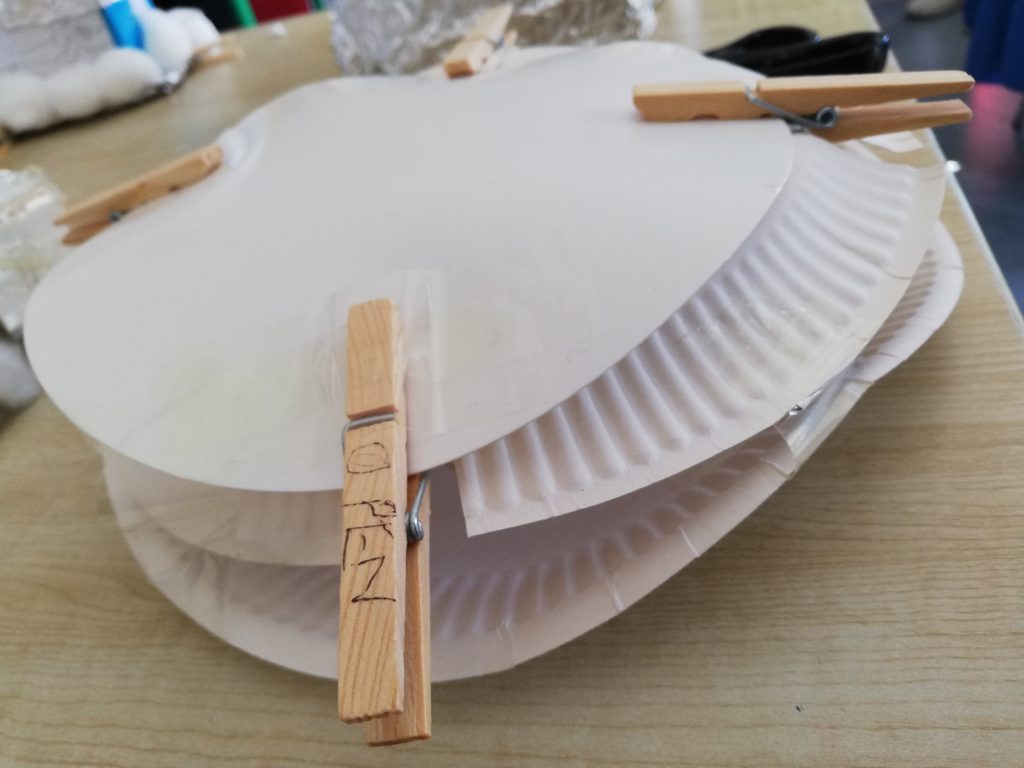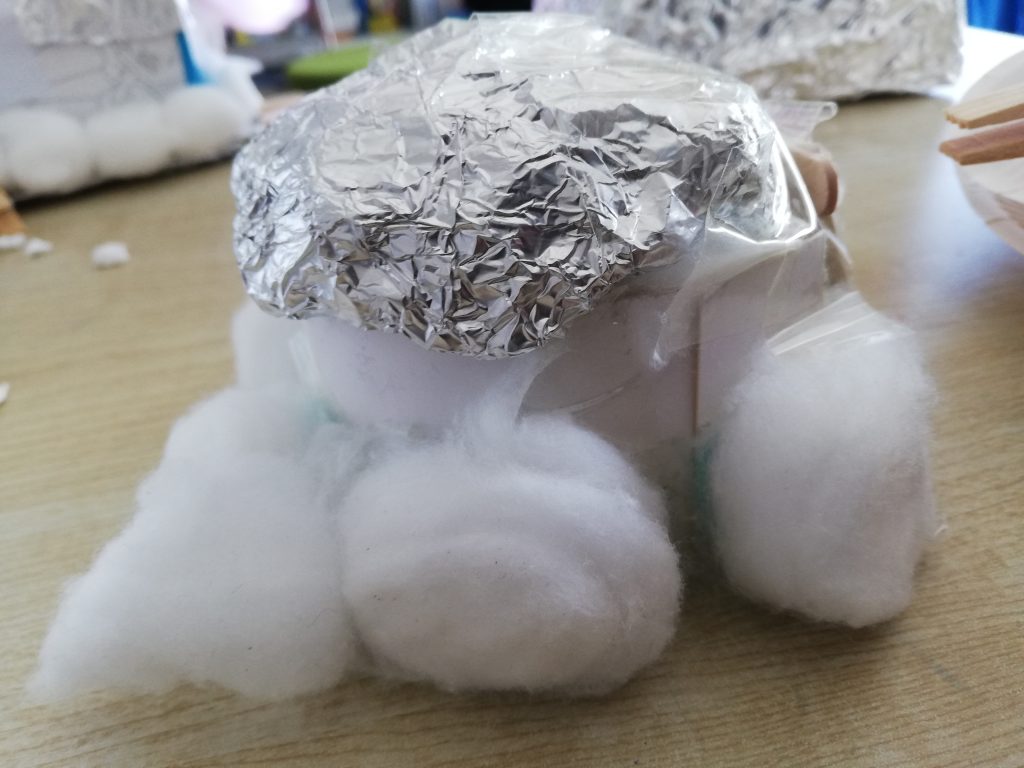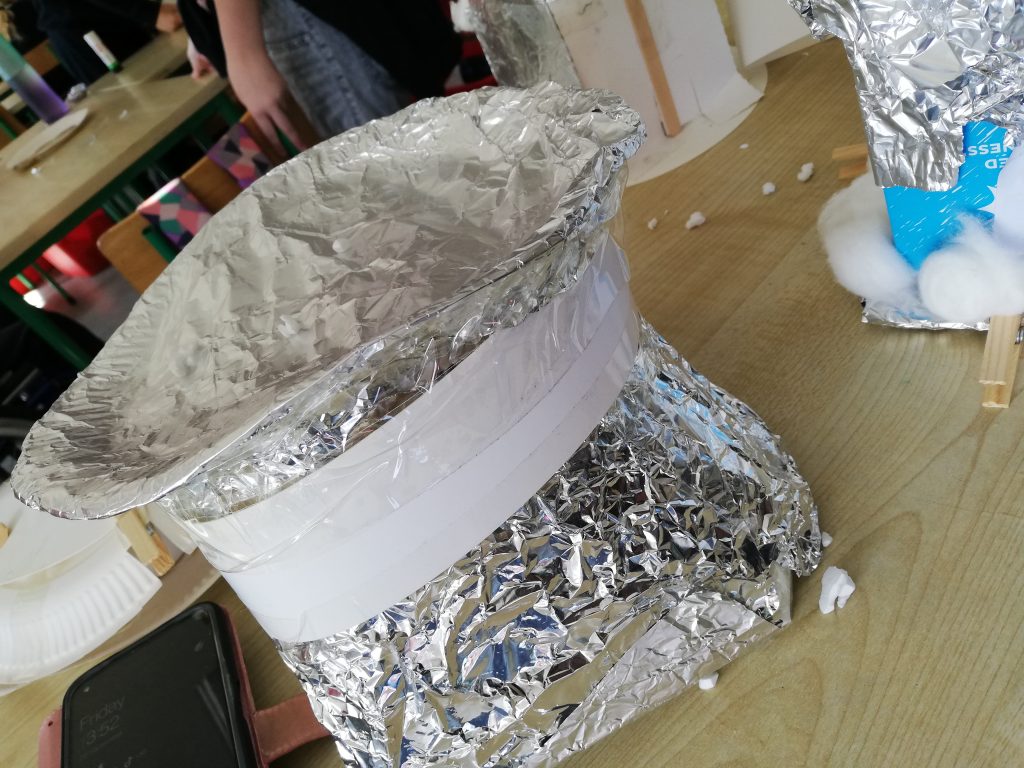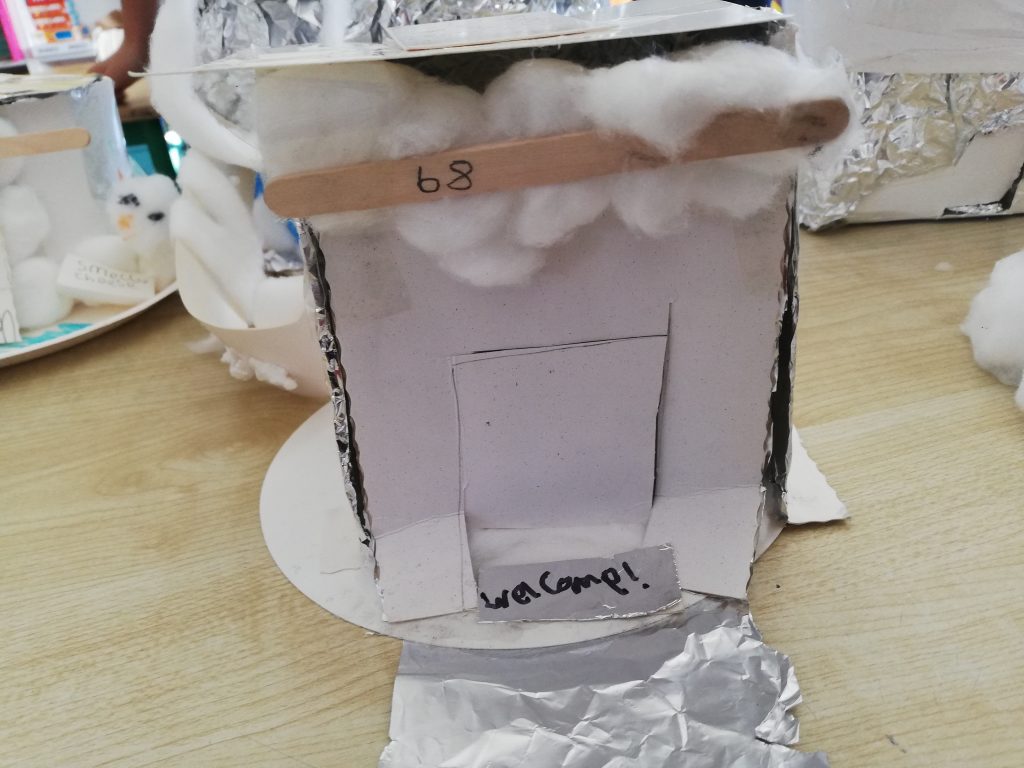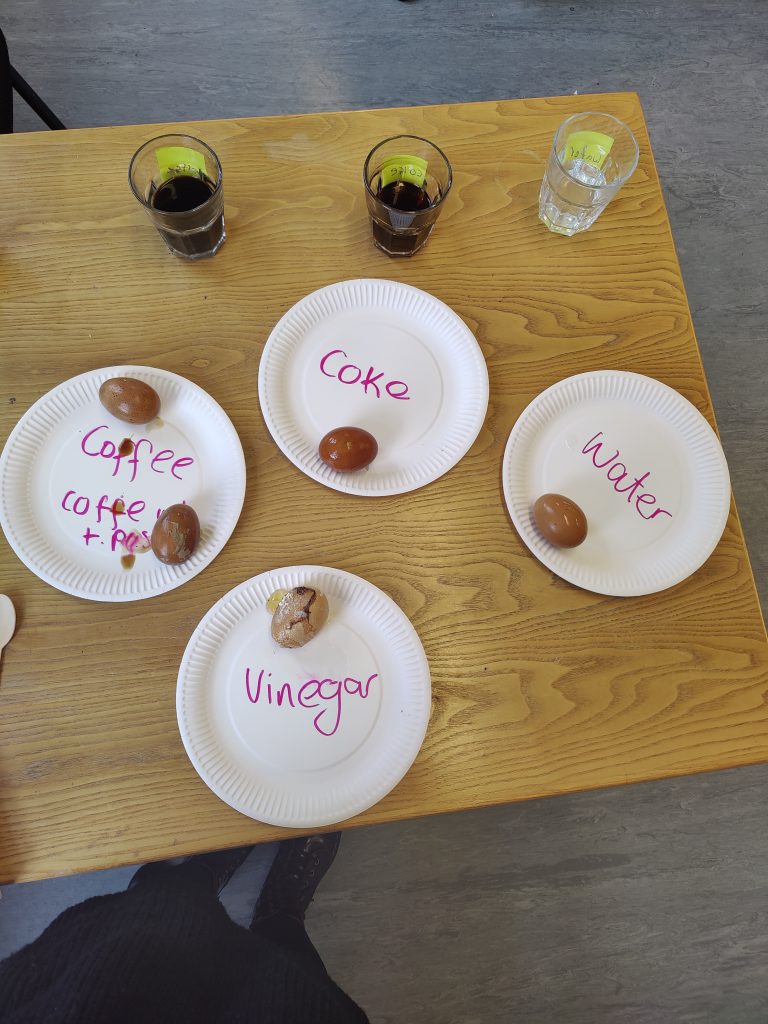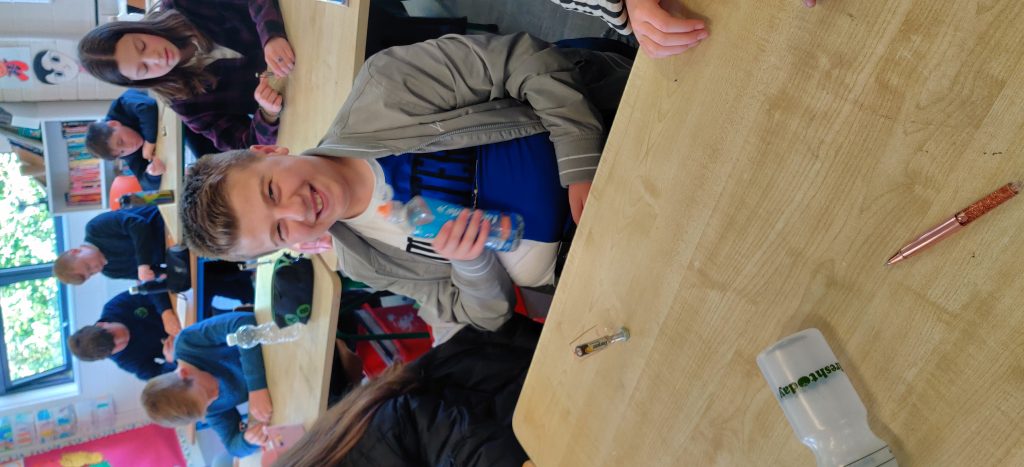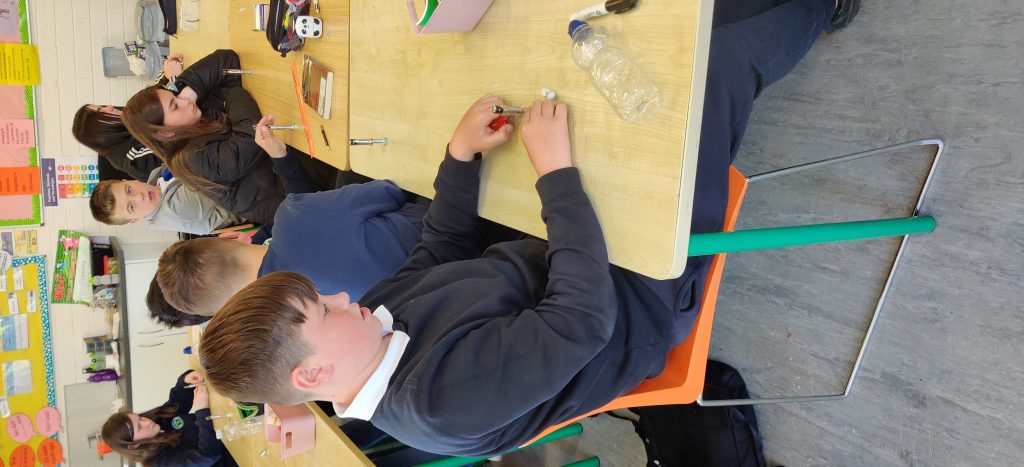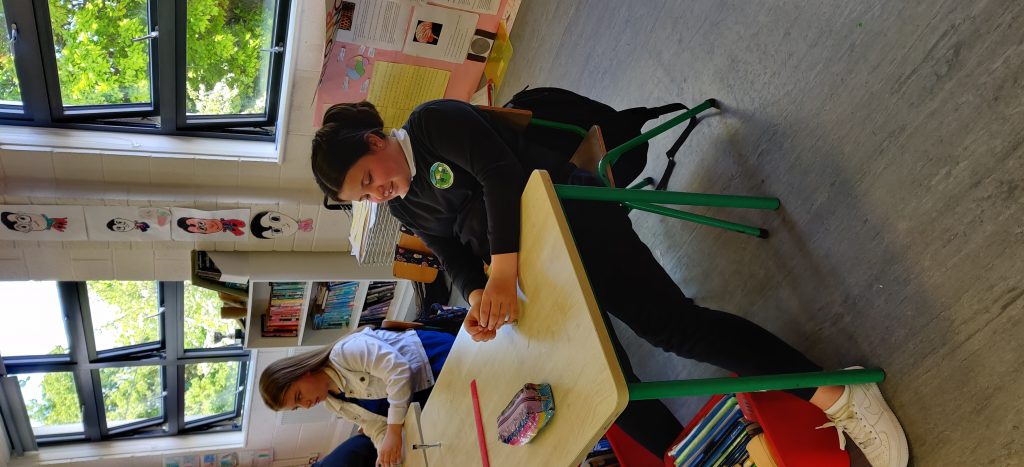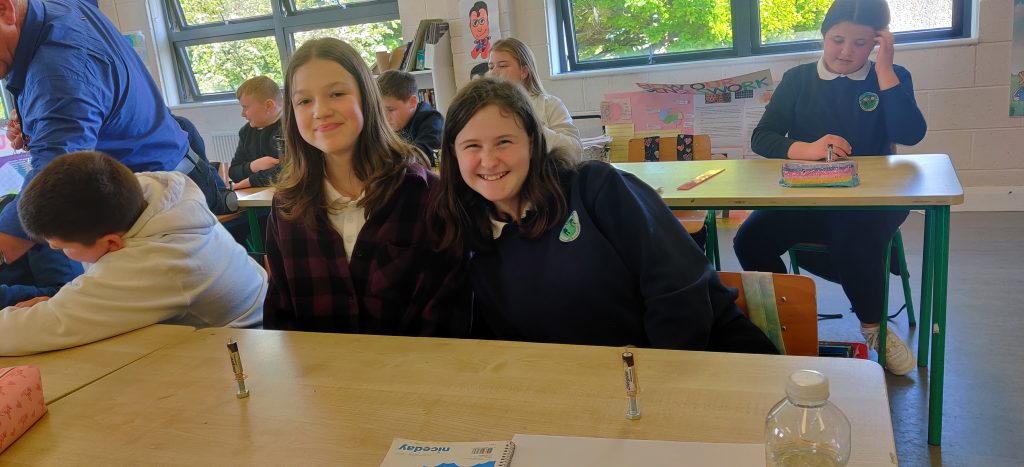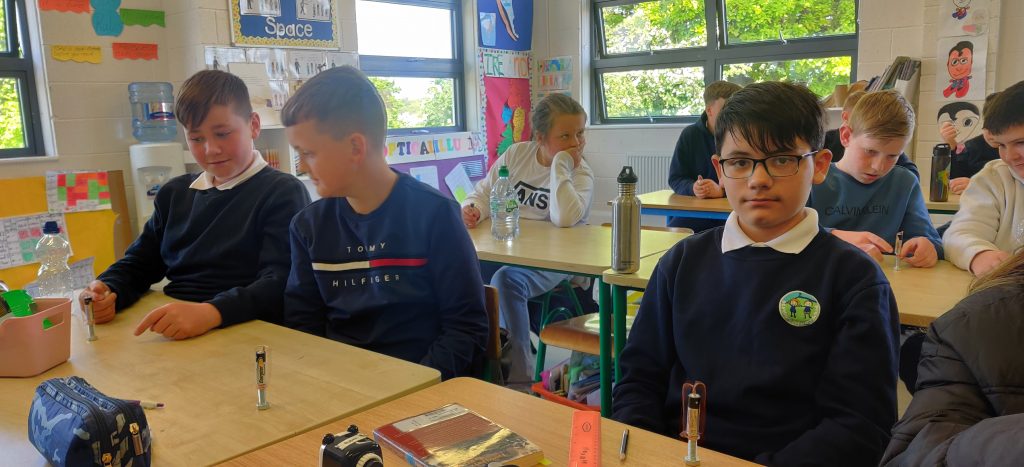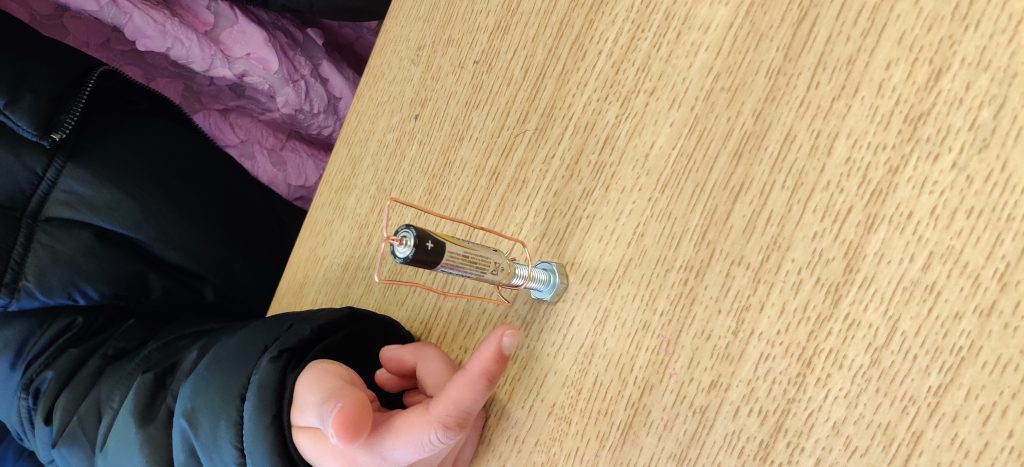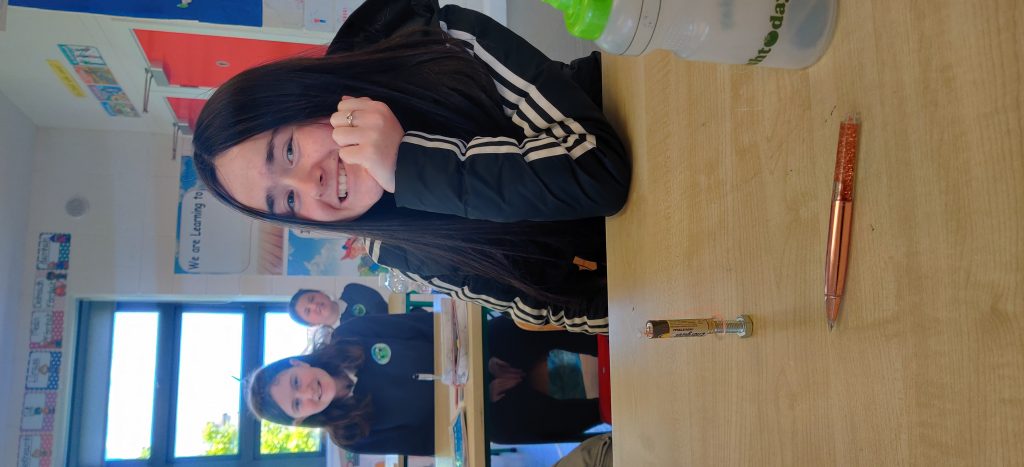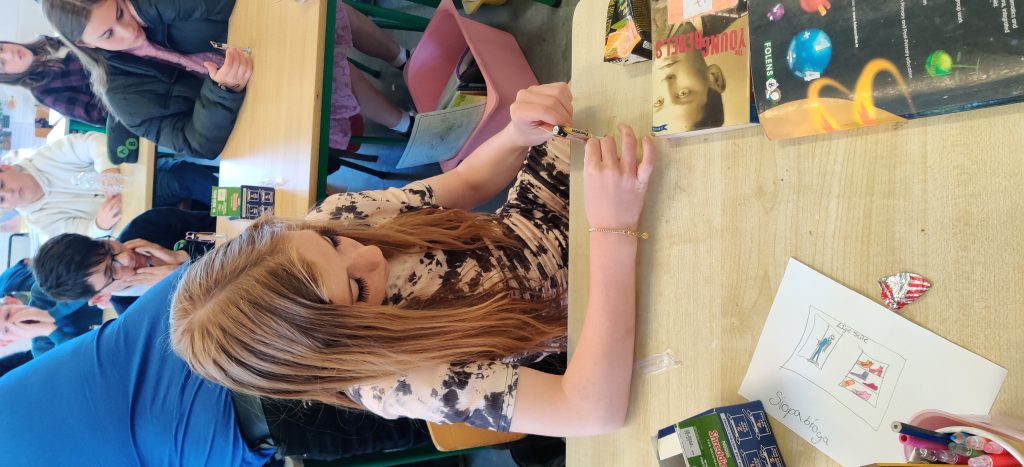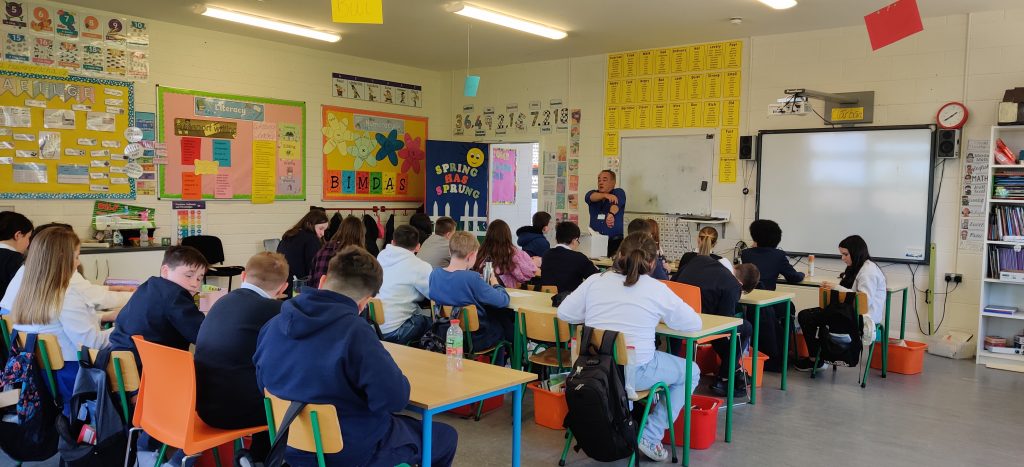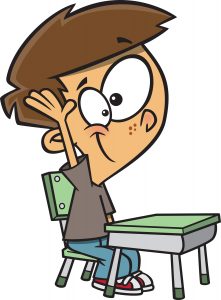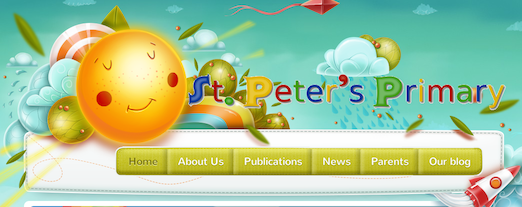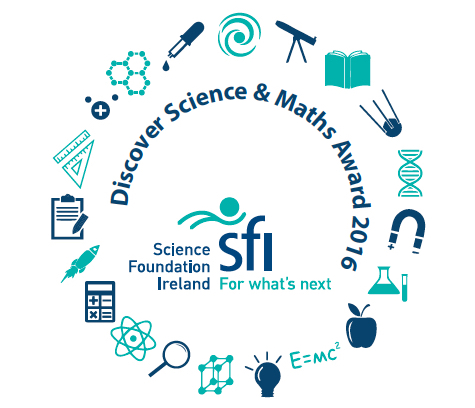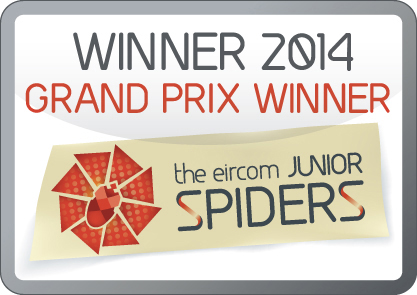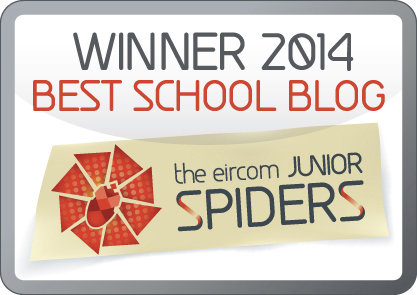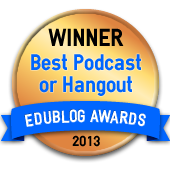In fifth class, we have been taking part in some fun maths activities for maths week!
We were using our problem solving skills to solve shape patterns!
We worked together to continue the patterns!
We looked at 2D shapes and tessellation. We made some spooky Halloween 2D shape tessellation art!

We also made 2D shape monsters! We are looking forward to more maths activities this week!

Fourth Class started Maths Week by making Halloween potions from the ‘Witches Den’.
Have a look at the creepy potions we made:
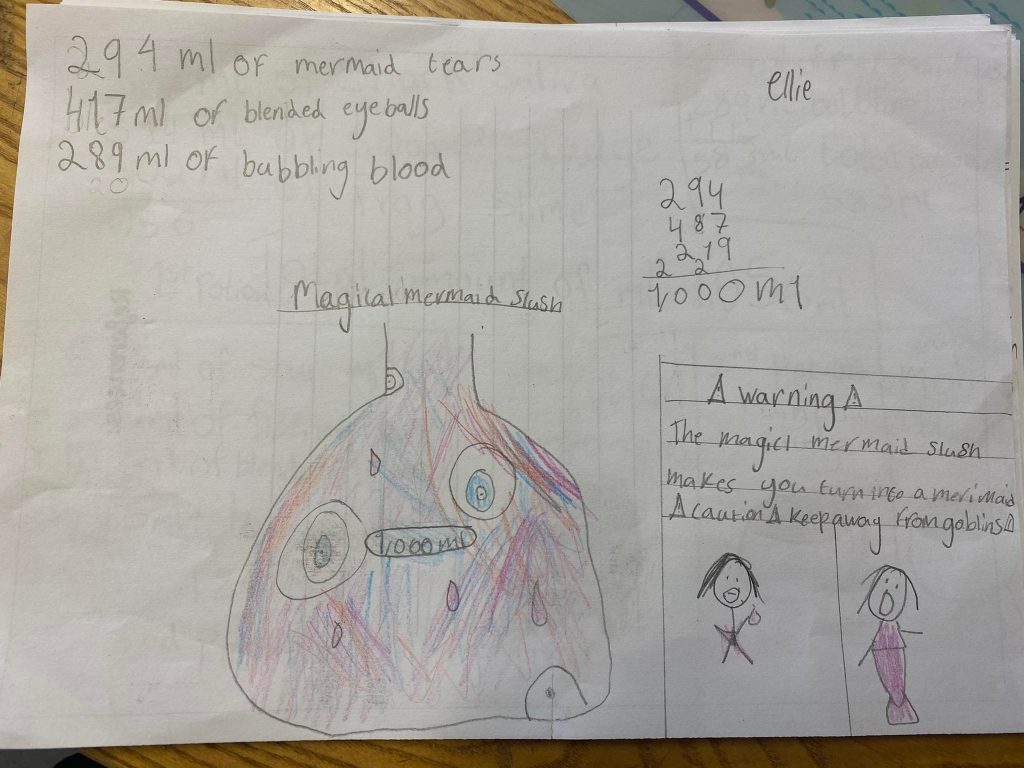
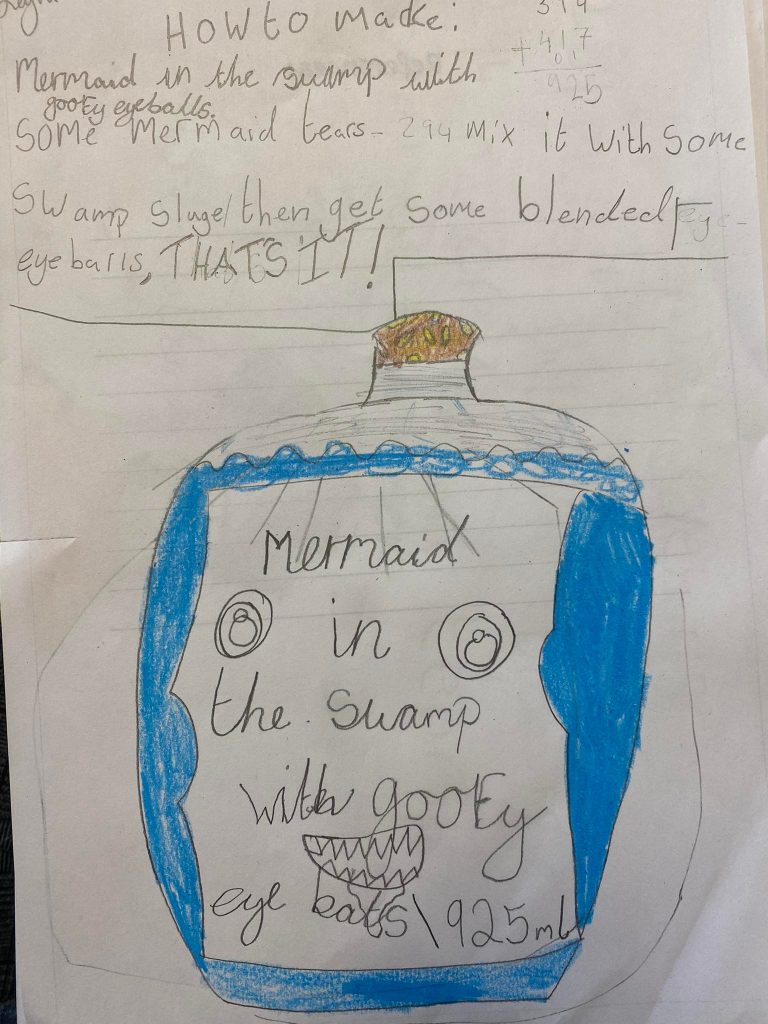
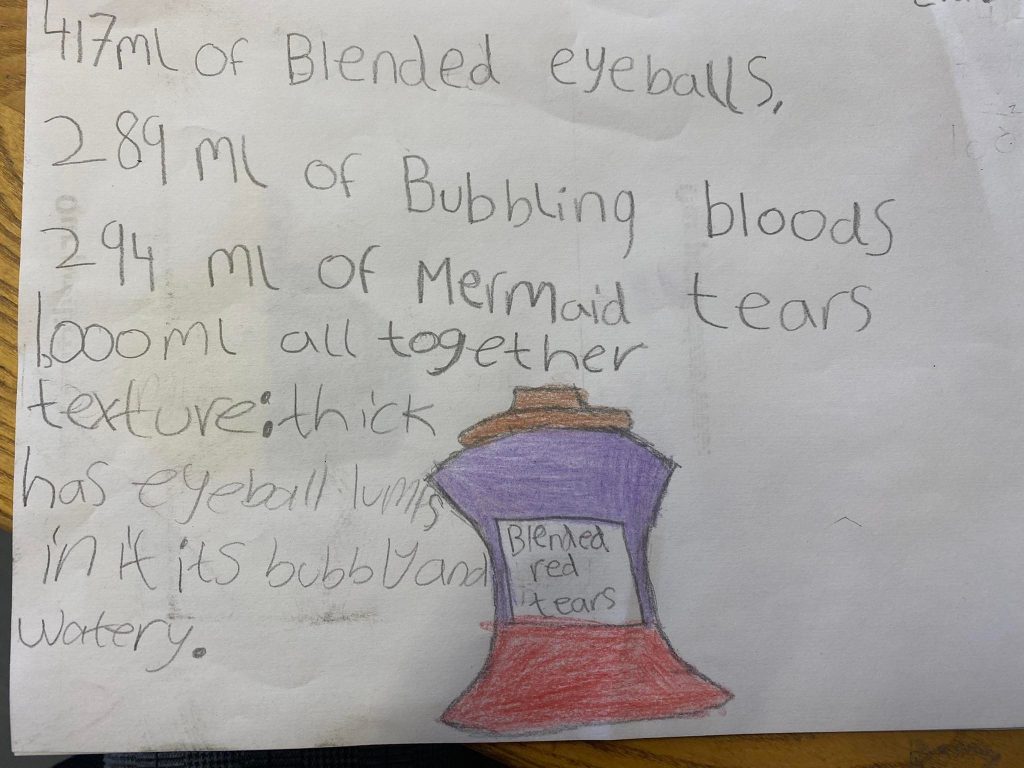
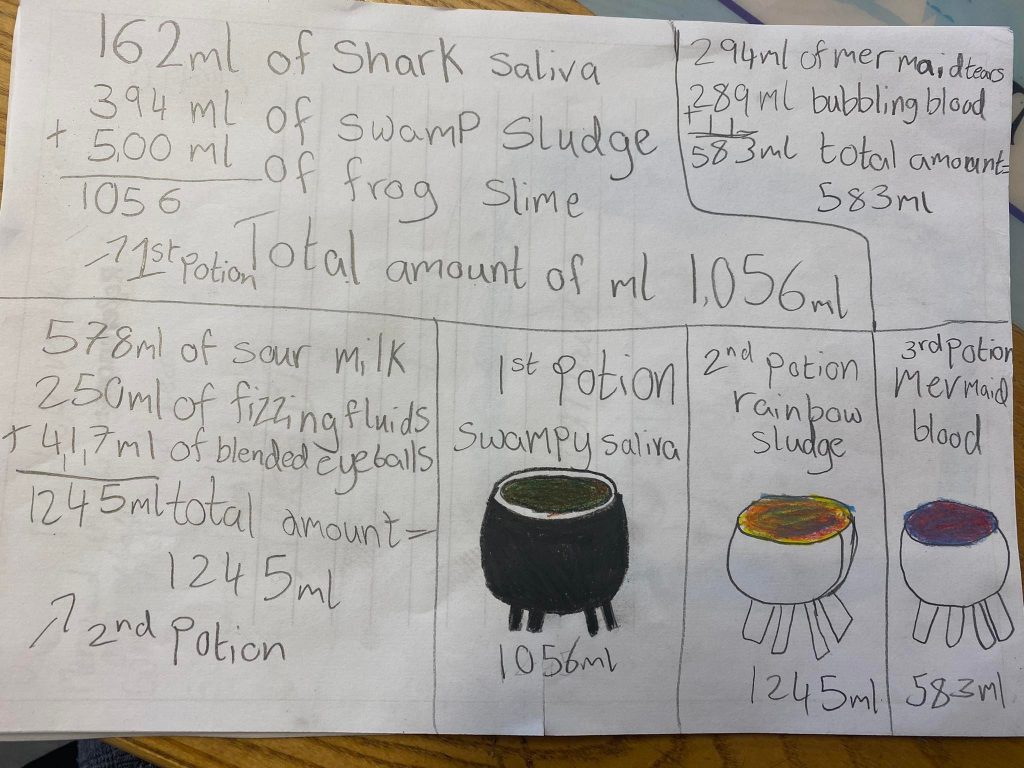
We then moved onto using some Math Week problems. Here is how we solved some of them:
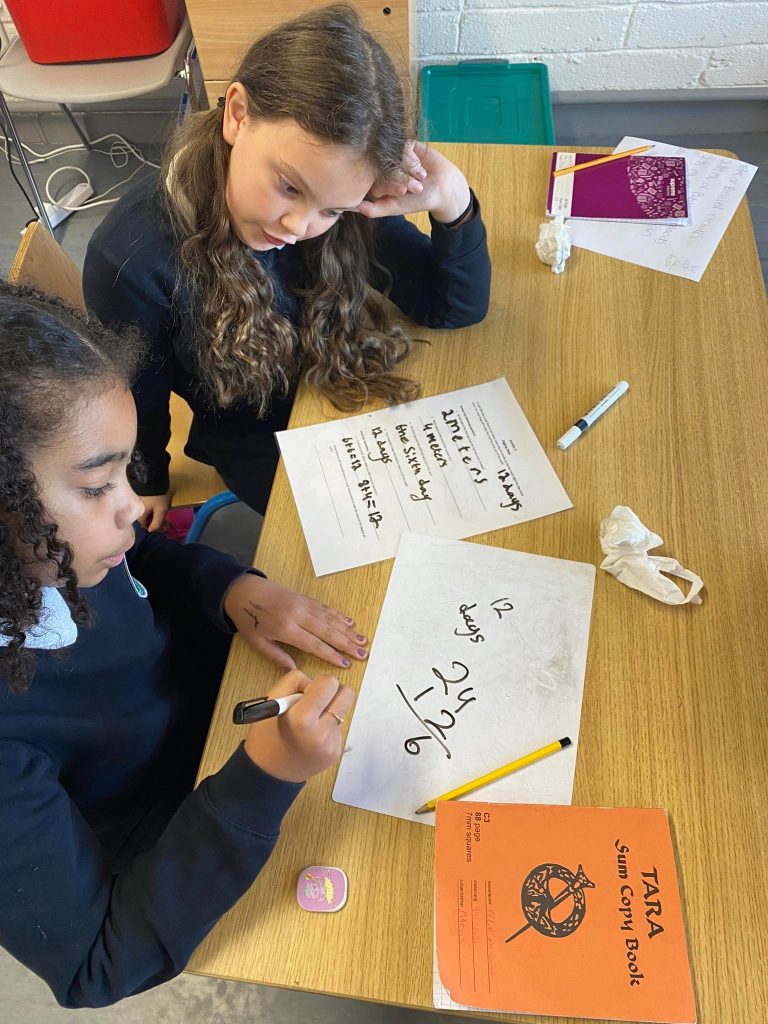
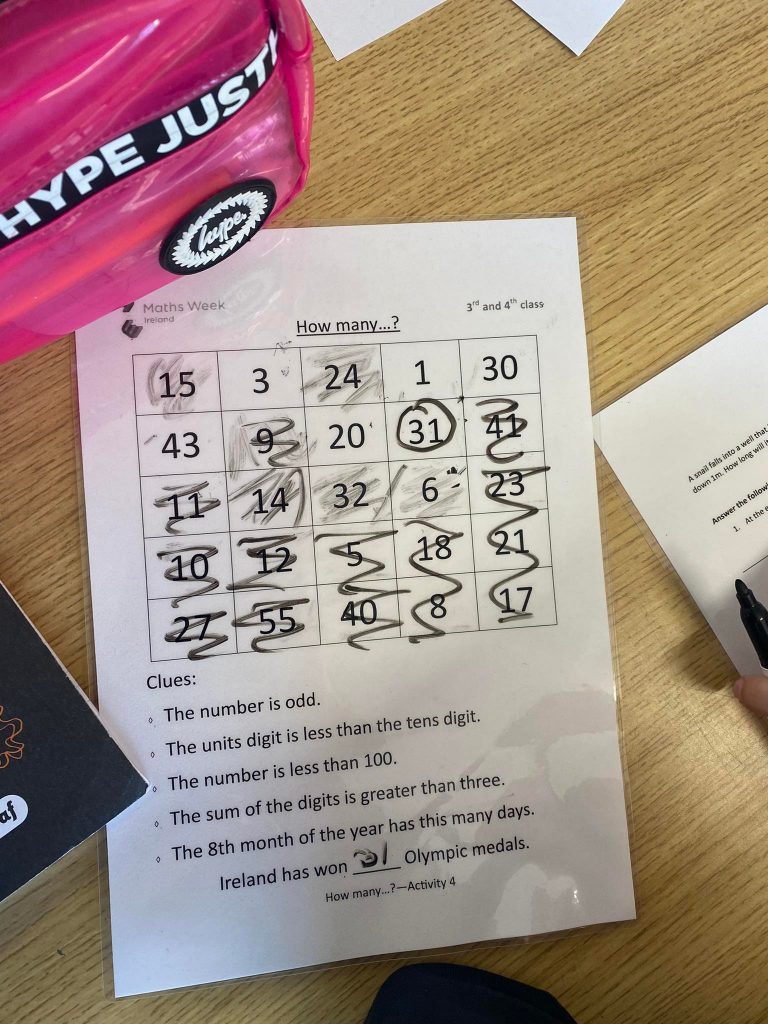
Finally we decided on a fun way to explore the lines and angles we were learning about during Maths Week. Here’s how we did it:
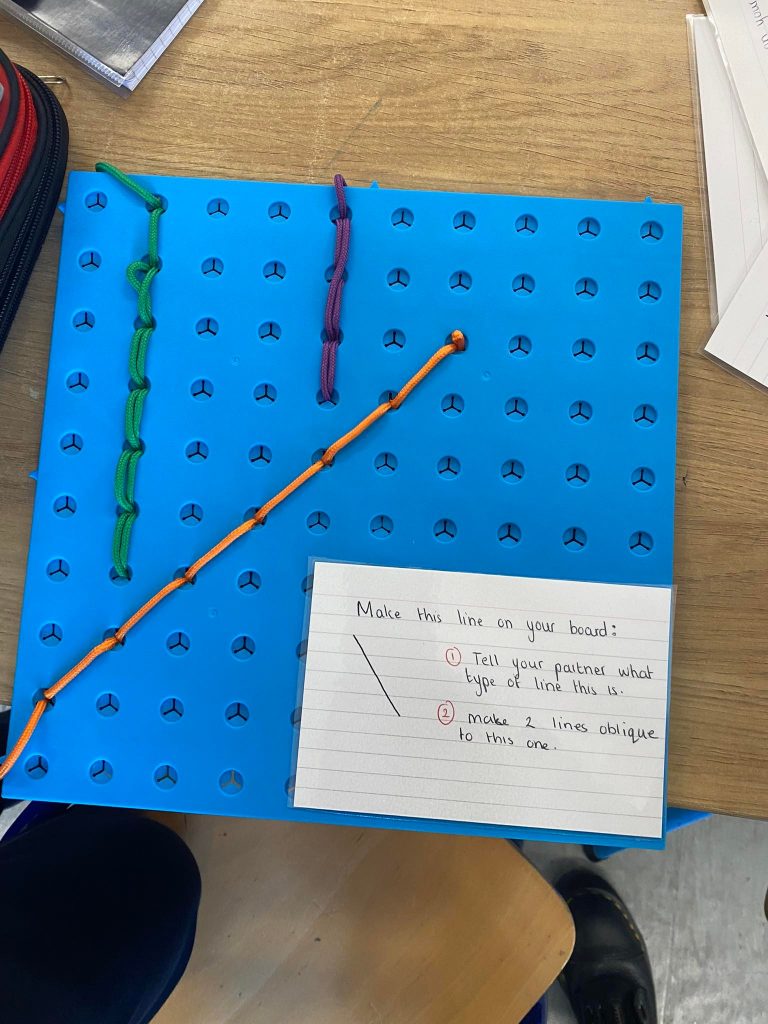
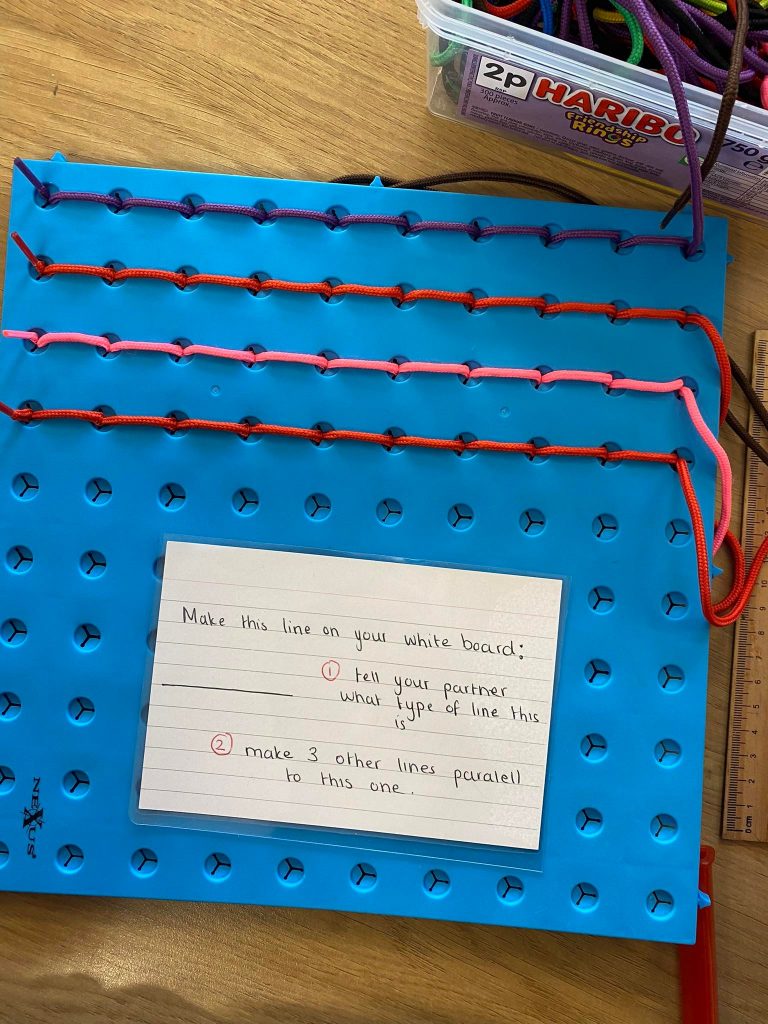
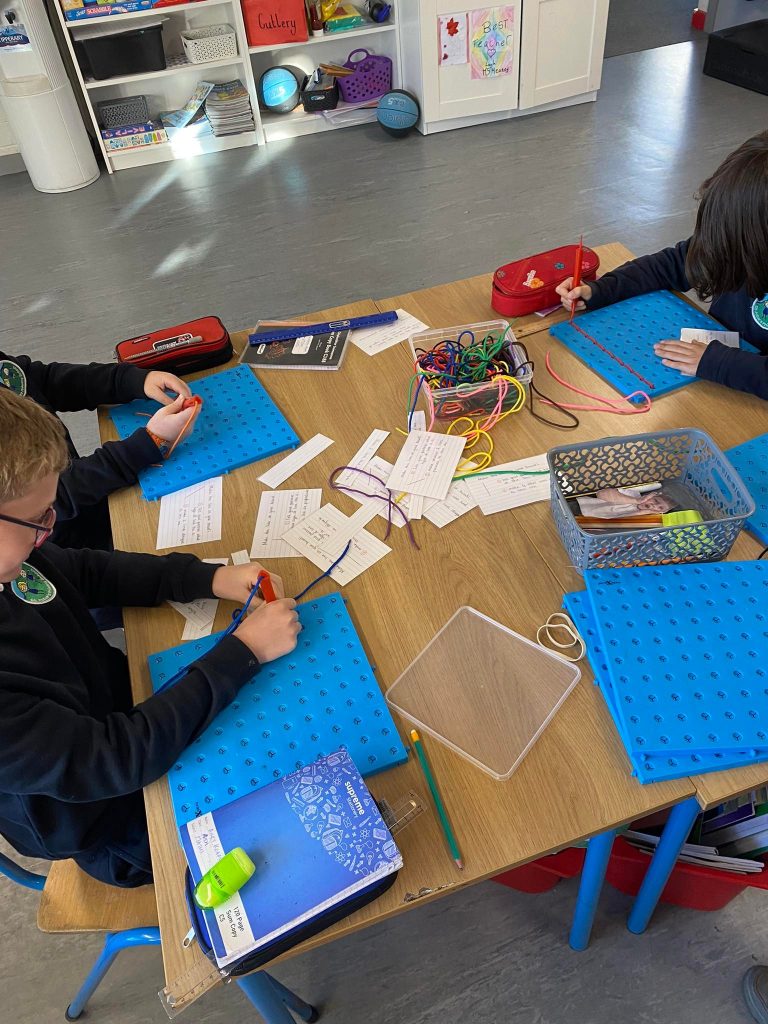
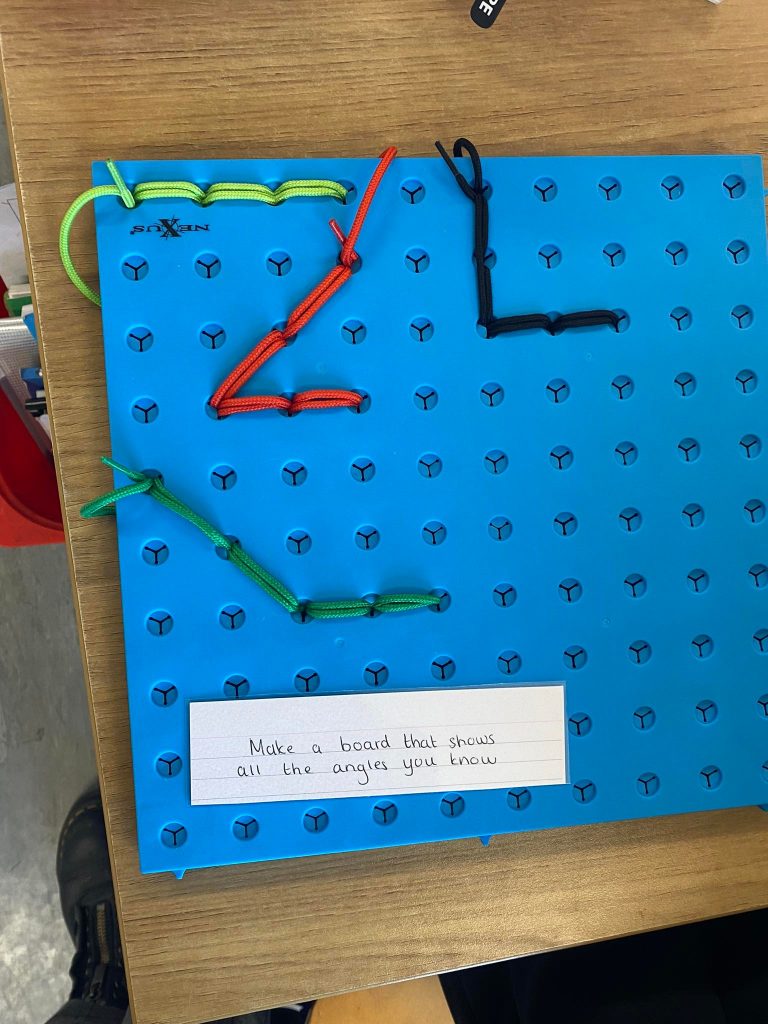
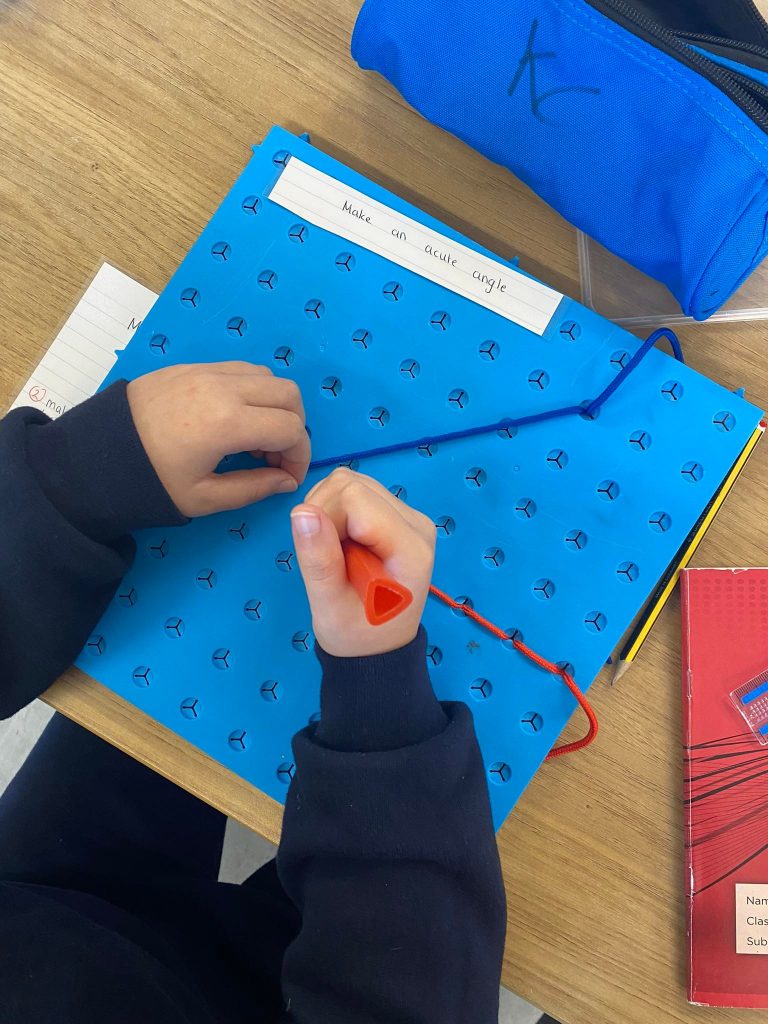
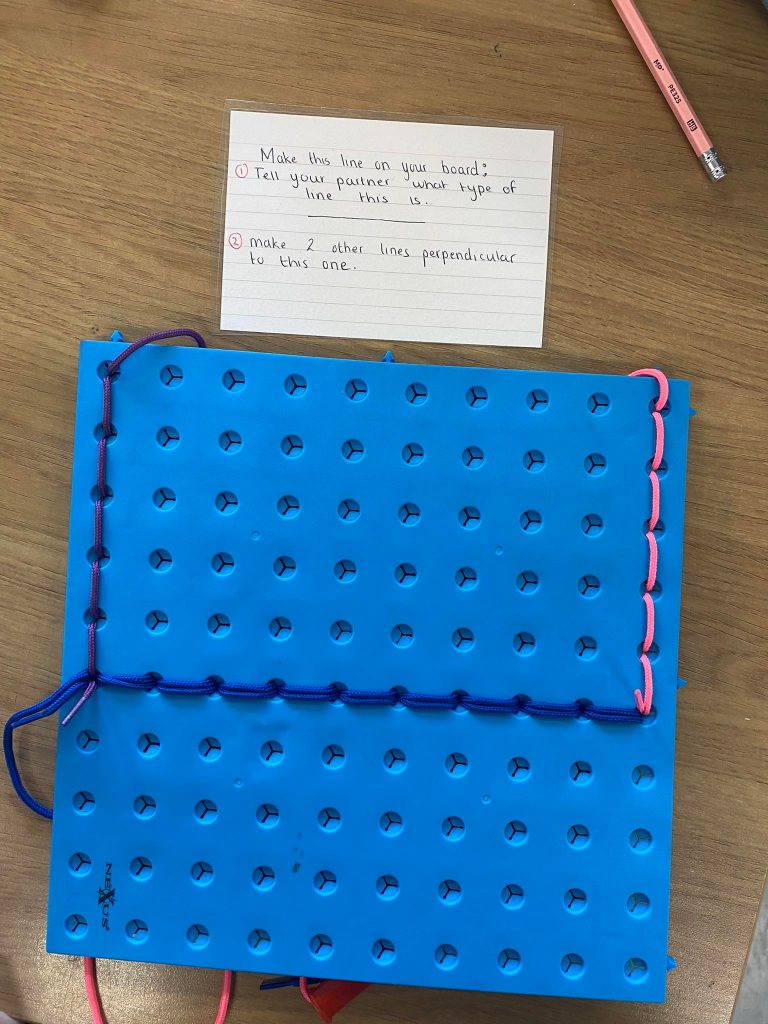
We are really enjoying Maths Week and are looking forward to other activities to come later in the week!
We have had a busy start to the year in 6th and have been reading a new novel, ‘Tom Crean’. We are thoroughly enjoying the story about the brave and heroic Antarctic explorer, who hails from Annascaul in Co. Kerry.
We recommend that everyone reads this book as it is truly inspiring and at times, unbelievable!
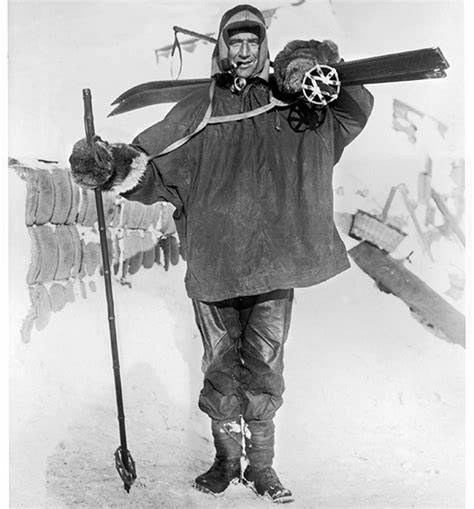
Learning about Antarctica has been extremely interesting and we have had many questions about the Earth’s least – populated and coldest continent. Using our atlases we have researched the places that Tom Crean visited on his multiple expeditions and have identified the remote areas that these pioneering explorers discovered.
Inspired by these events we decided to take part in a STEM activity. We began to imagine and wonder, how the explorers survived in these freezing and harsh conditions. We discussed the importance of the materials they used to stay warm and how important effective insulation is. Students were challenged to create a prototype shelter that provides protection from extreme temperatures.
Insulation is a barrier that reduces the transfer of heat energy from one material to another by reducing the conduction, convection and radiation effects. It is extremely important in severe weather conditions – both hot and cold. Since heat will always move to a colder source, in cold climates, insulation slows the heat from leaving the house/ or someone and in hot climates insulation slows down the hot outside air from entering the cool inside. Essentially insulation should maintain a constant temperature; neither too hot or too cold.
We used our engineering skills to design and build an insulated shelter to slow down the melting of ice. We used cardboard, tinfoil, scissors, paper plates, cotton balls and tape to create our shelters. The design process is very important and we sketched our own original designs before coming together to decide on group’s choice of prototype.
We all received the same materials and time to complete the challenge. We had the following criteria to meet:
- The design must fit on a paper plate.
- The design must include a door that can open and close.
- The design must ensure that the ice does not touch the shelter when being placed in for testing.
We discussed what factors can keep something warm or cold and spoke about coffee cups, flasks and coolers.
Teamwork was very important when completing this design and make challenge:
It was very interesting to see the different design concepts that were used. It was also great to see our creativity skills being put to good use and no two designs were the same!
After building, it was time to test!
Each team received a cube of ice and they were placed inside small holders so that they could be easily placed inside our newly designed shelters. Once the ice was placed inside, the 15 minute timer began!
After the 15 minutes were up, we recorded our findings and used small measuring cylinders to calculate how much water was contained in each holder and as a result, which shelter had been best insulated!
Our results varied considerably, which was interesting! The ‘best insulated’ shelter had only 0.5ml of water in the container after 15 minutes. Some shelters had collected 3ml of water.
We discussed the findings and observed that the bigger shelters seemed to offer better insulation in this case. We can’t be certain that this is the case but we felt that they had no gaps in materials too and combined with their size, perhaps this contributed to their success. We look forward to testing again to see if our results remain constant.
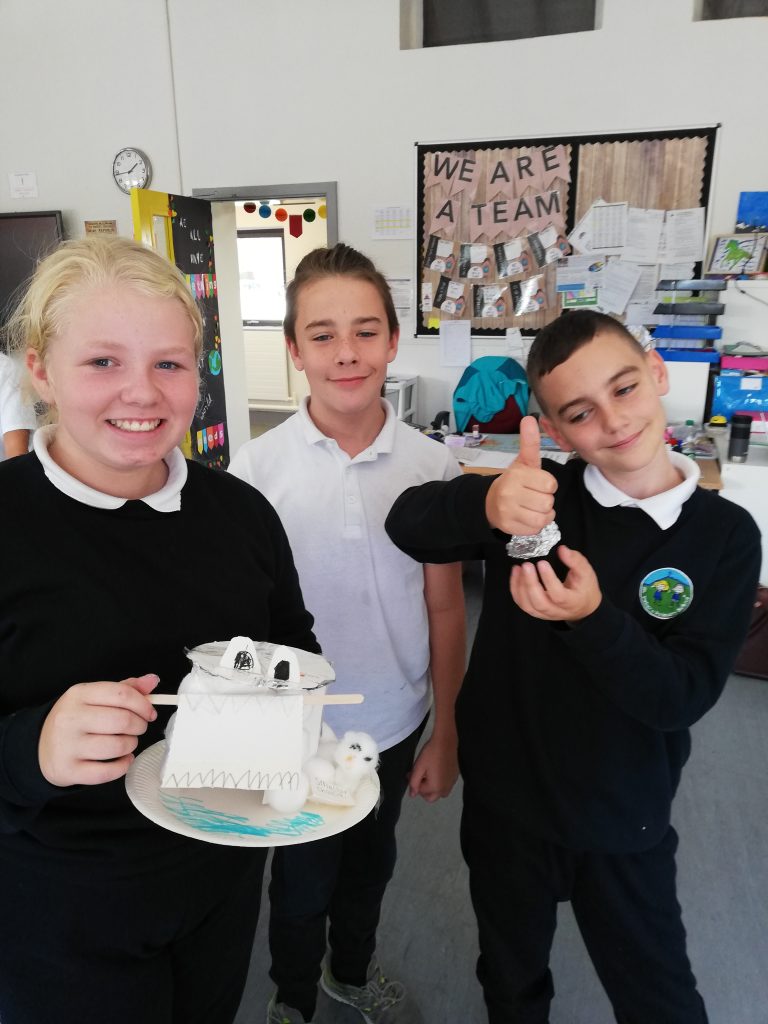
Teamwork! 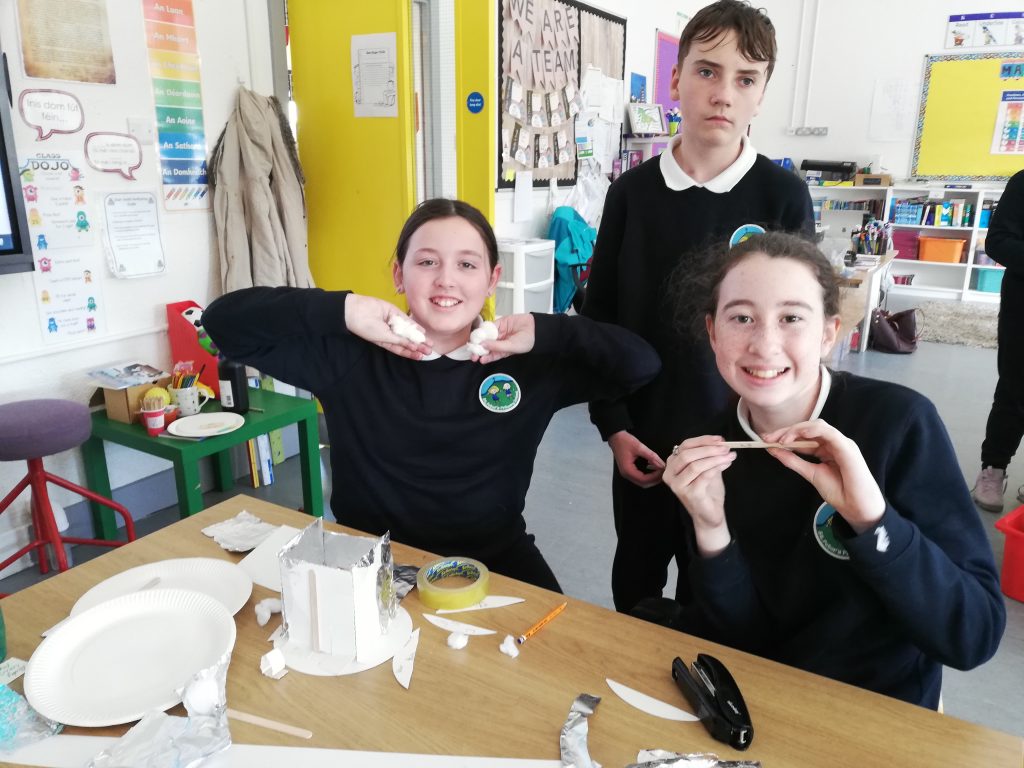
Insulating materials 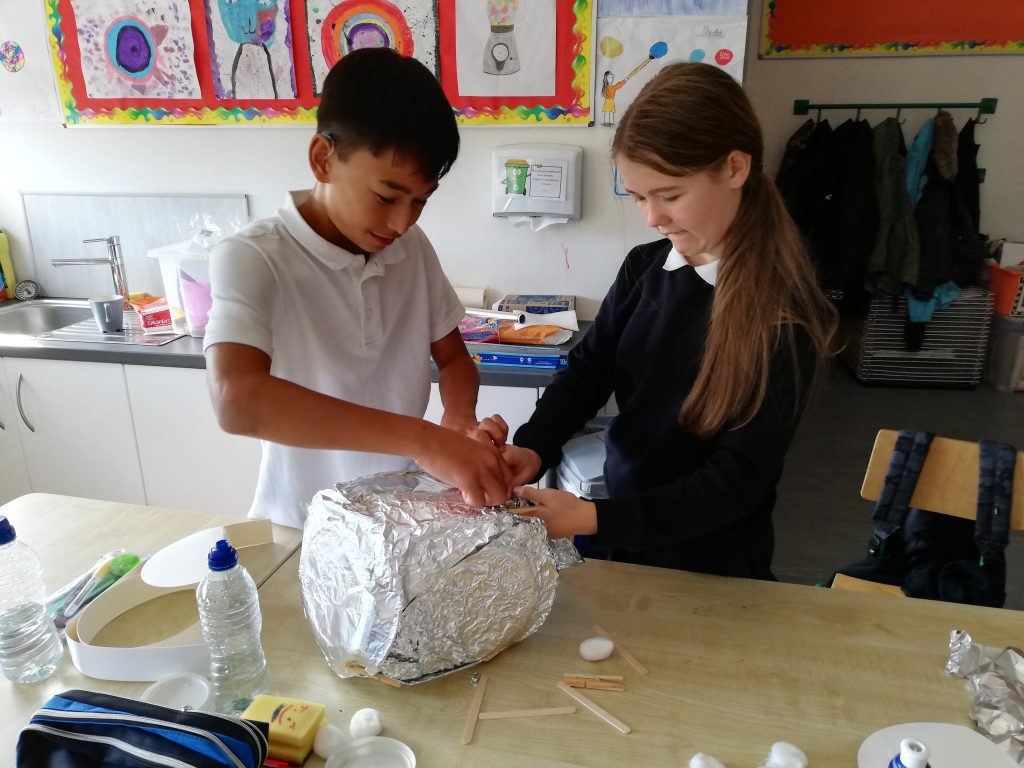
Insulating shelters!
Senior Infants have had a great first month back! They have been very busy. Have a look below to see what we have been up to.
Here are our first day in Senior Infants pictures, we’re already excited to compare them when its our last day and see how much we’ve grown over the year!
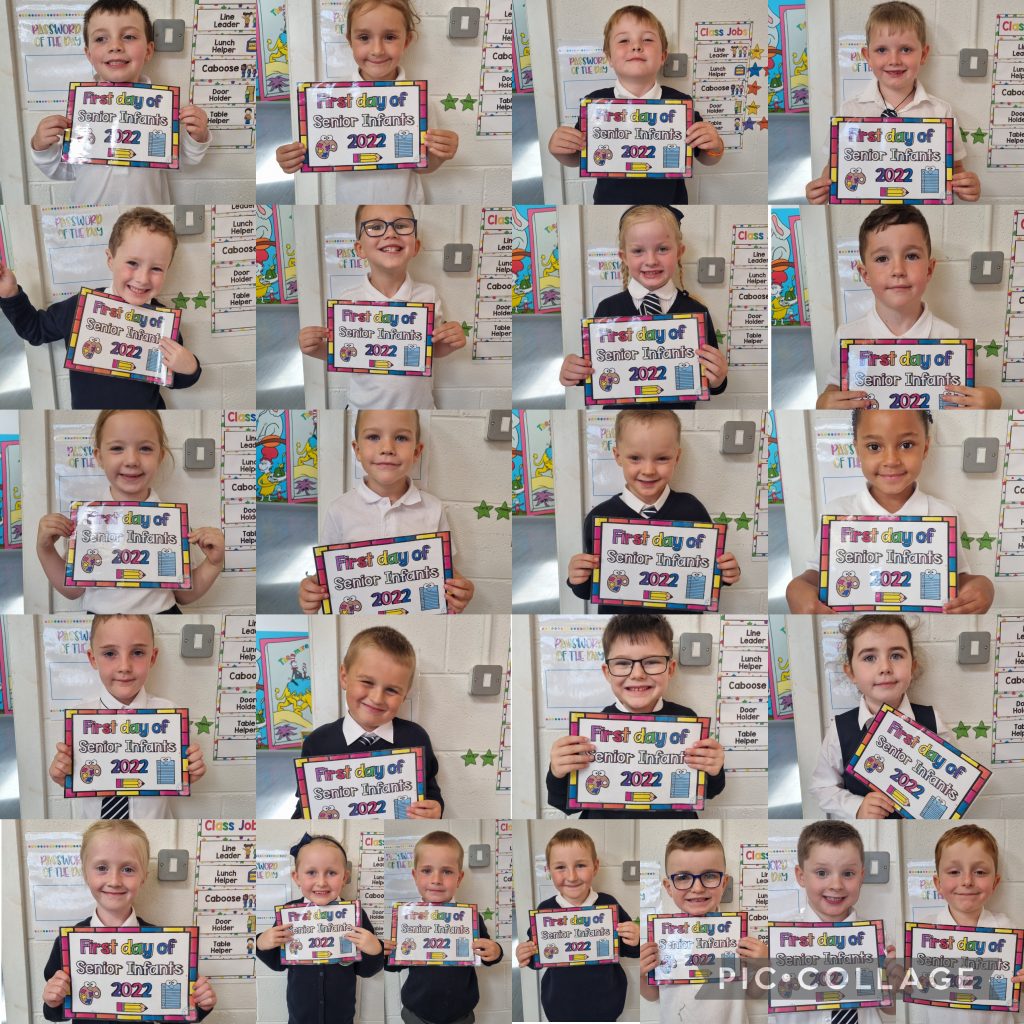
This month’s Aistear theme was ‘The Home’. We were learning a lot about our homes, different types of home and discussing all about the inside of our houses and the different rooms. In the roleplay area we played house, where there was a kitchen that we cooked for our family and played in role as different characters. In the construction group, we built different types of houses using LEGO. During the playdough station, we created ourselves using playdough mats and in our fine motor station, we cut out and glues different items that belong in different rooms on a blank house sheet.
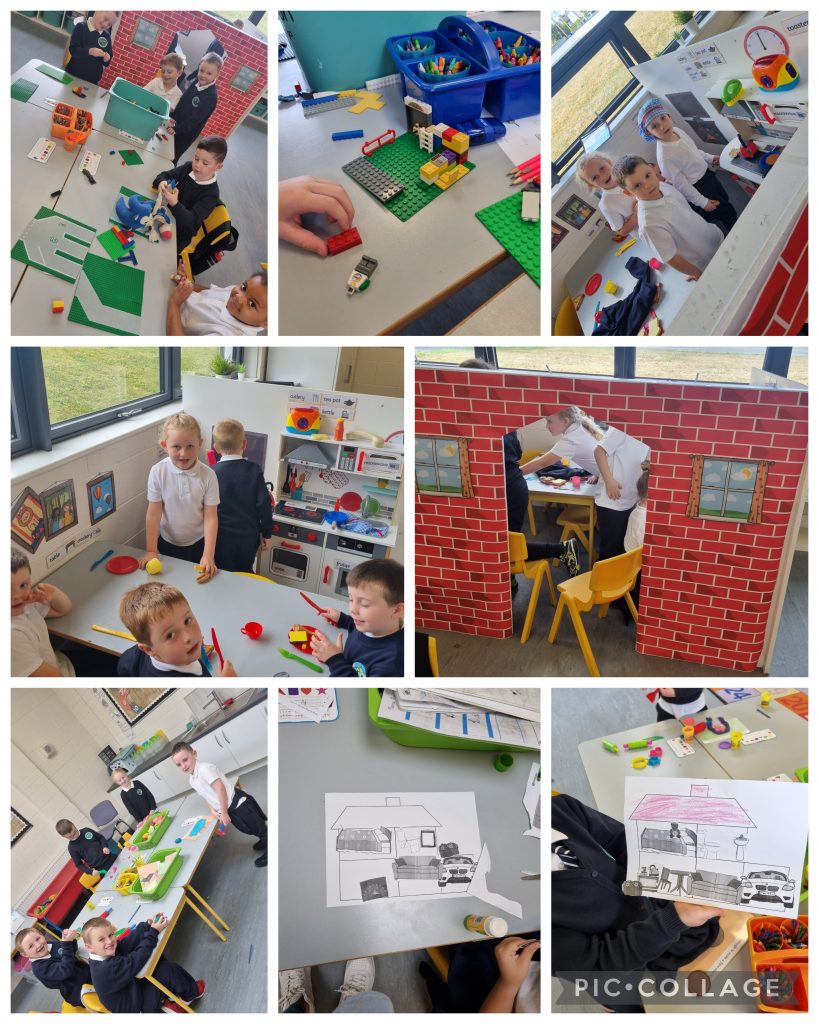
We have been busy practicing sorting and did a really fun big sort in the hall, have a look at the pictures below.
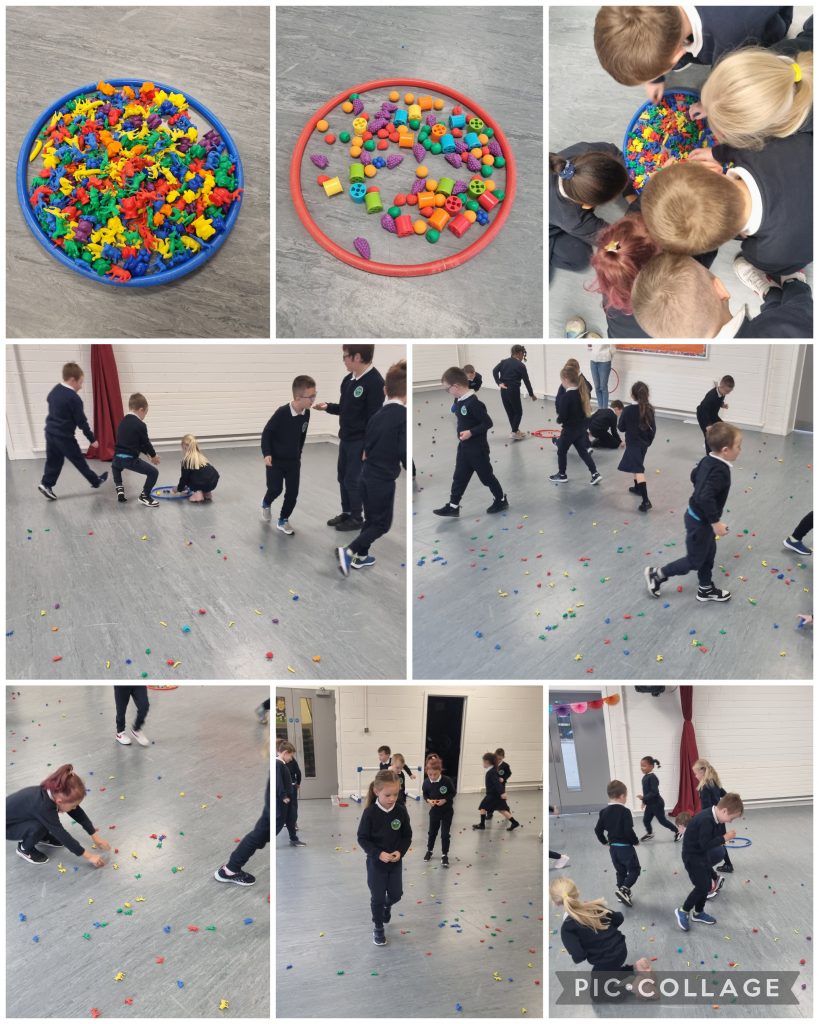
We have also been practicing our number formation 1-5 so that we are all ready to learn about our new number 6 next week!!
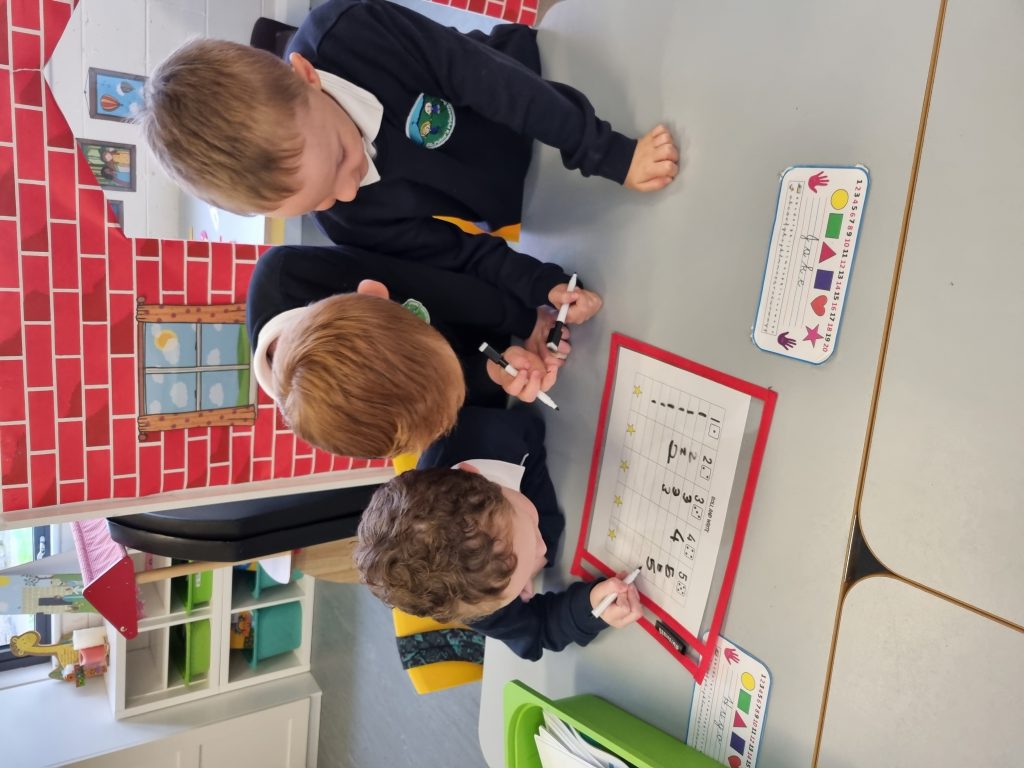
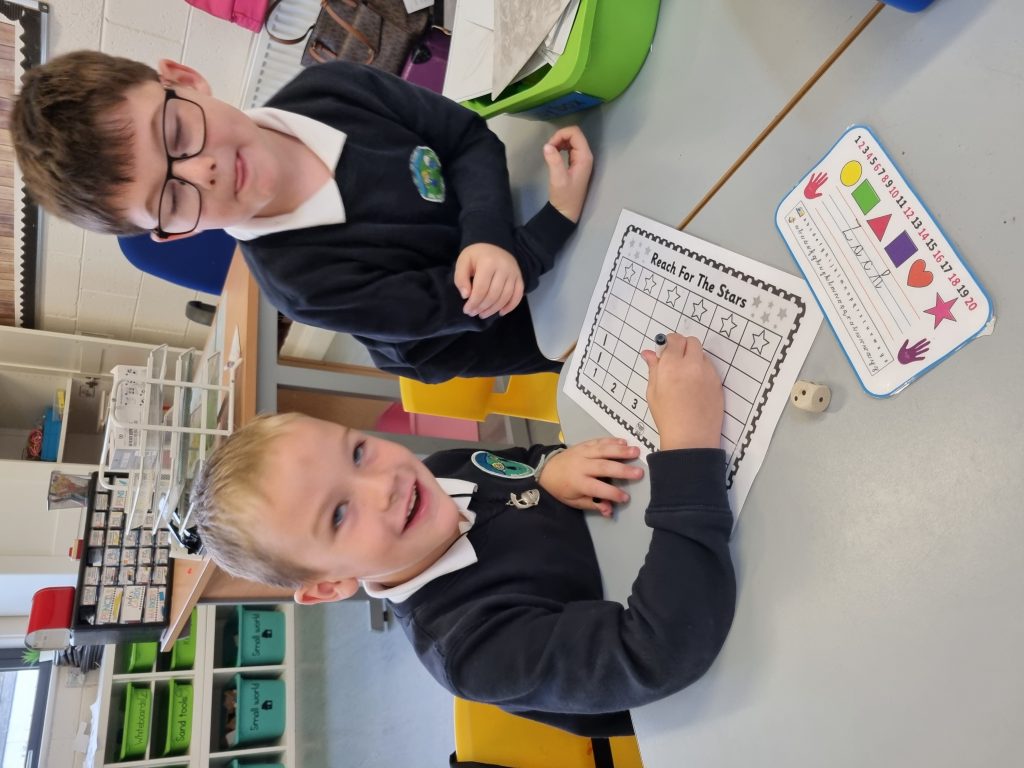
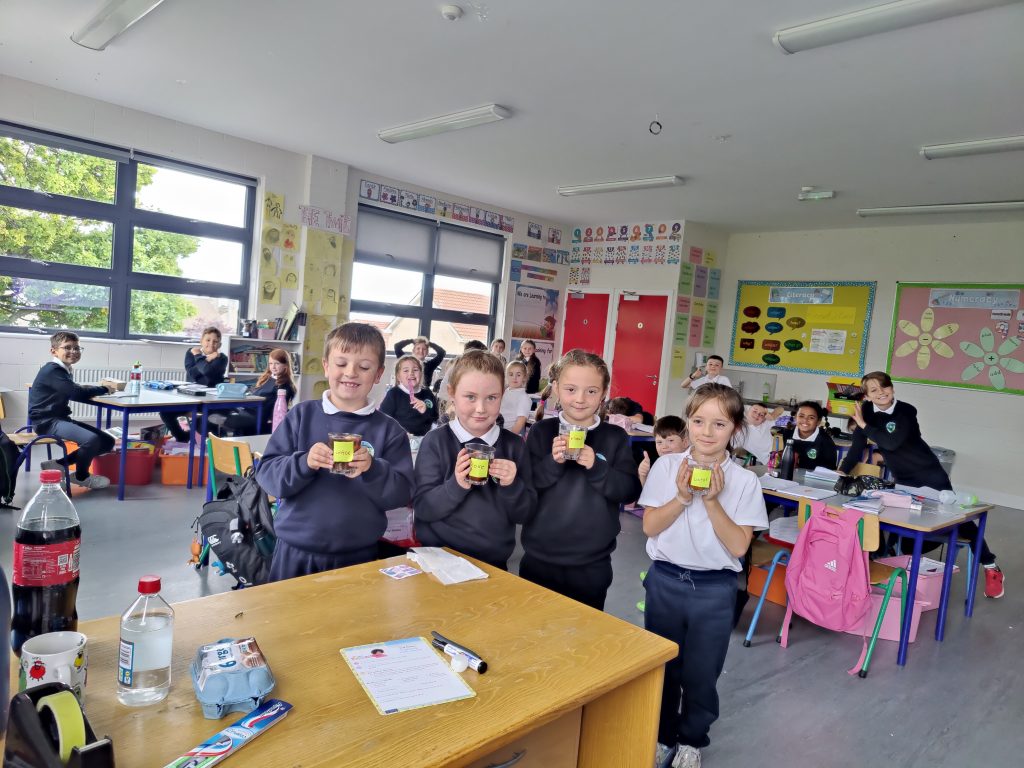
We have been learning all about teeth in third 🦷 We did an experiment using eggs, because egg shells and teeth are both made of calcium compounds that react similarly to acid (and none of the children fancied having vinegar in their mouth for 3 days in a row).
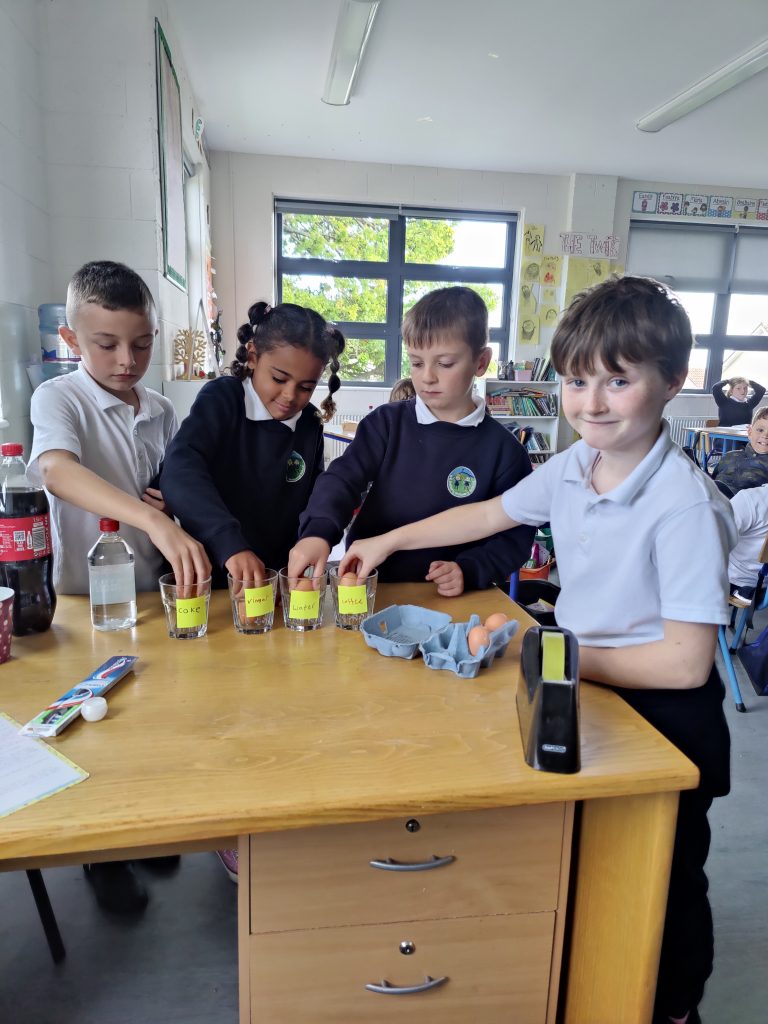
We filled the glasses with coke, water, vinegar and coffee to see the impact they had on the egg shells. We put two eggs into the coffee, one covered in toothpaste, to see if it would make a difference.
The results were:
•Water- no change
•Coffee (without toothpaste) brown with dots.
•Coffee with toothpaste- slightly less brown/no dots.
•Vinegar- the shell dissolved but the egg membrane remained in tact (before it was handled roughly and sadly burst before photographic evidence)
The children had a ball!
Fourth class started the year with a great STEM challenge called ‘Design a Bridge’.
During this challenge the children tested different bridge models to see which was the strongest. Below you will see the pictures of flat bridges, arched bridges, walled bridges and corrugated bridges.
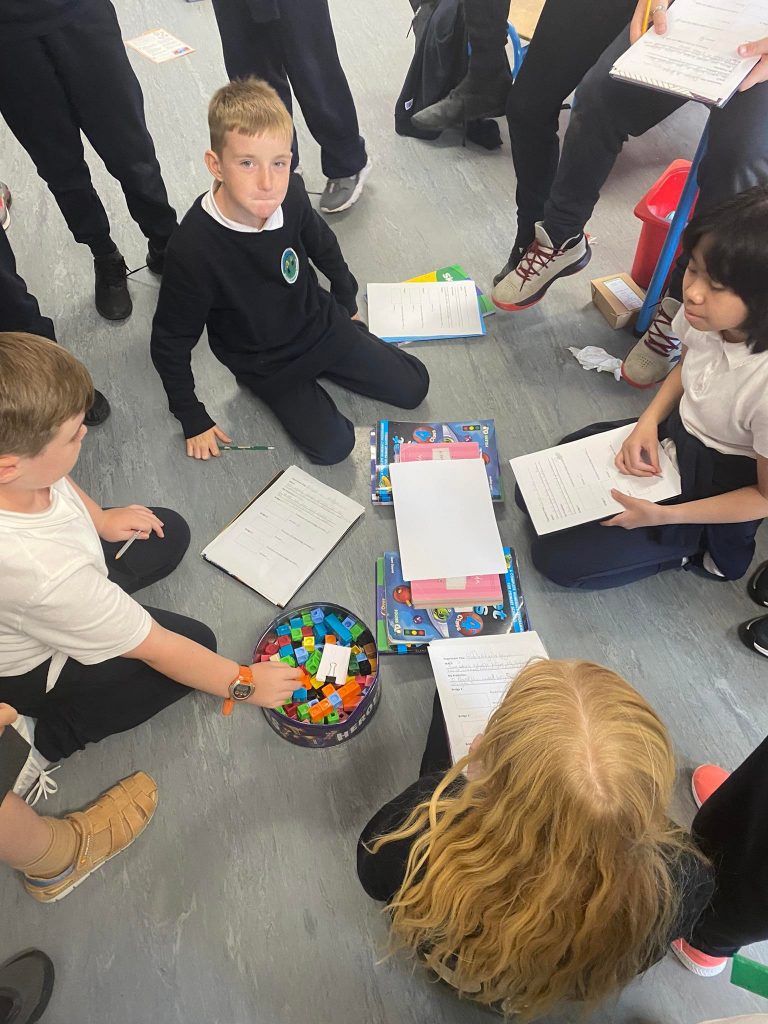
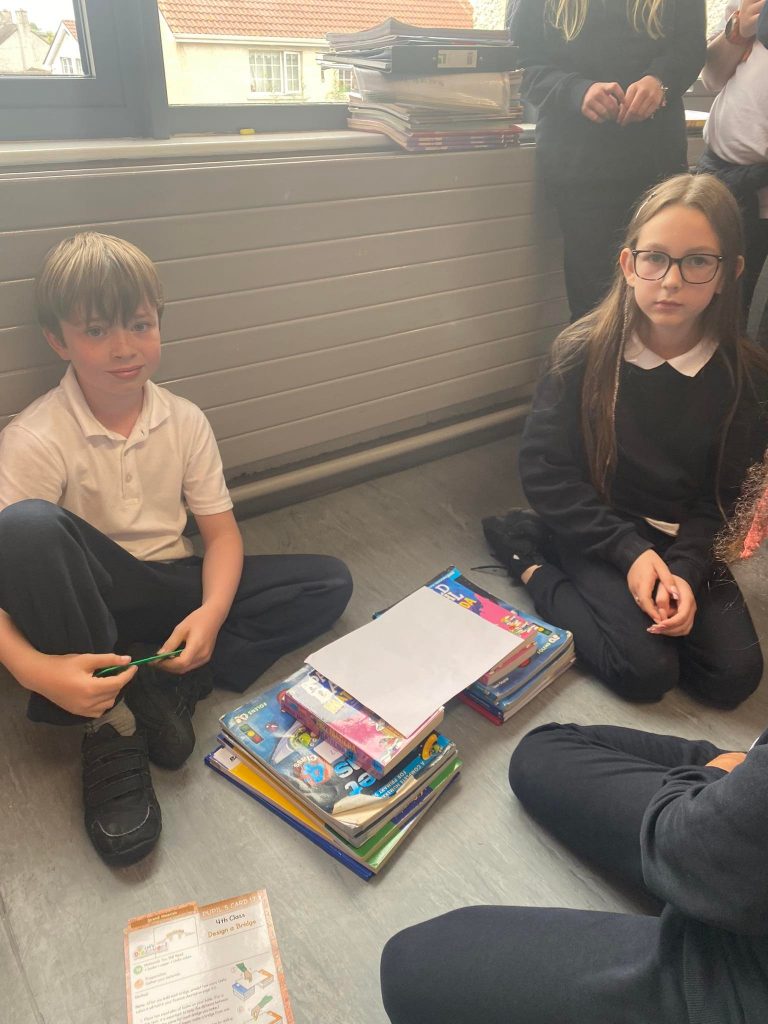
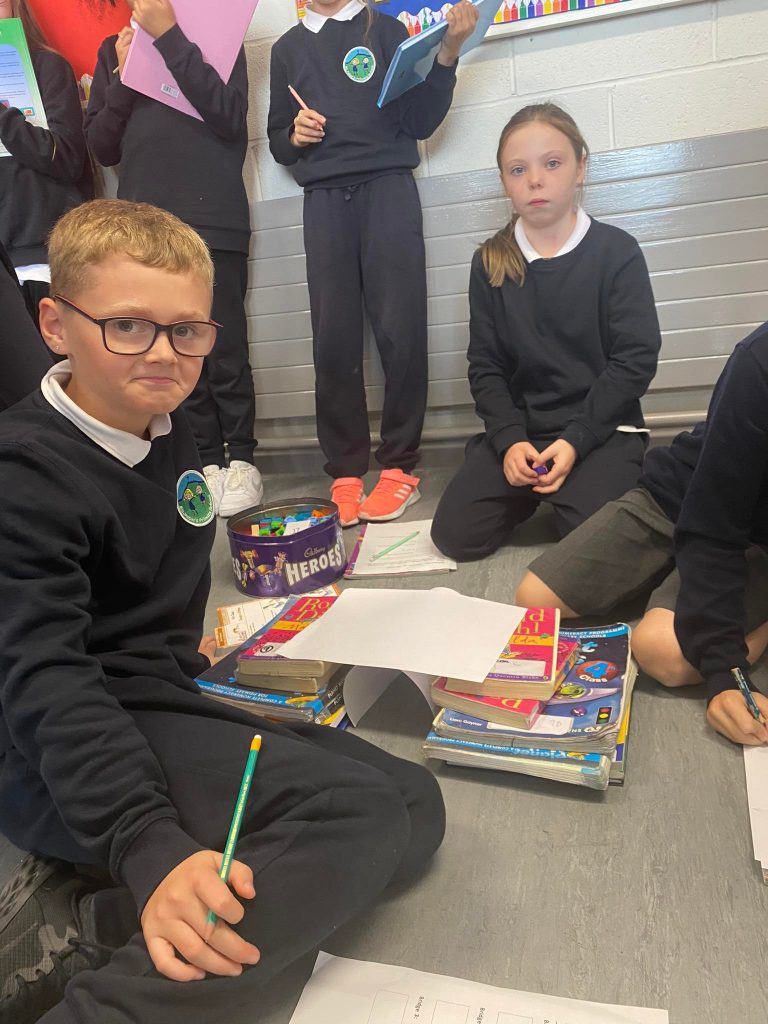
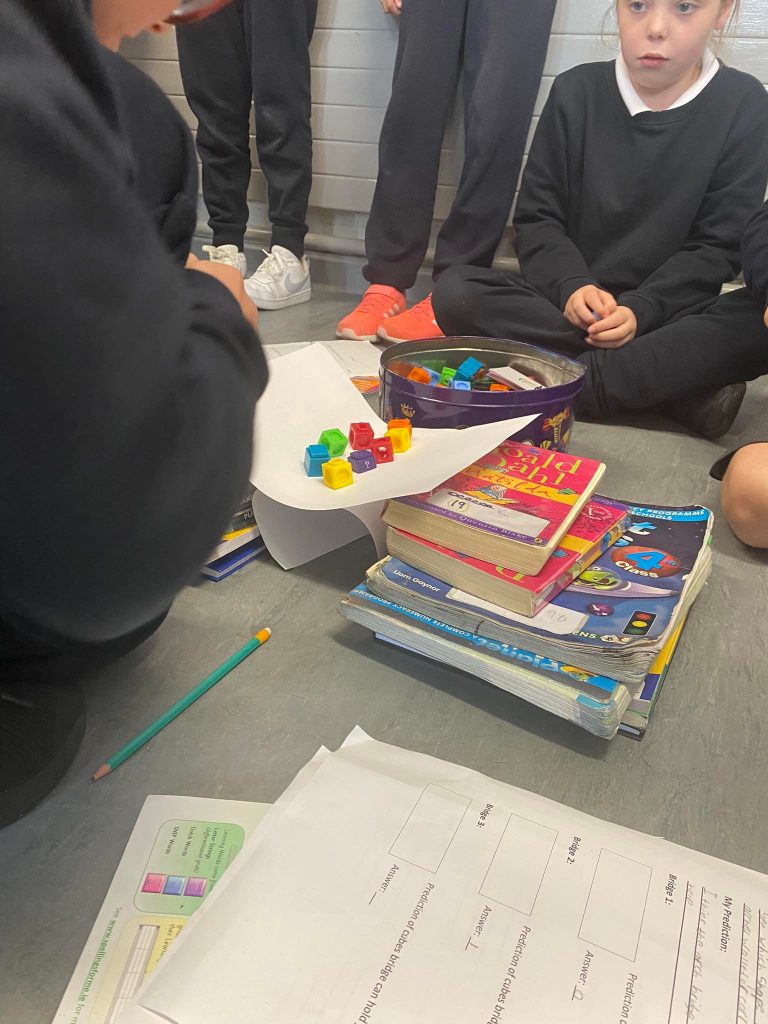
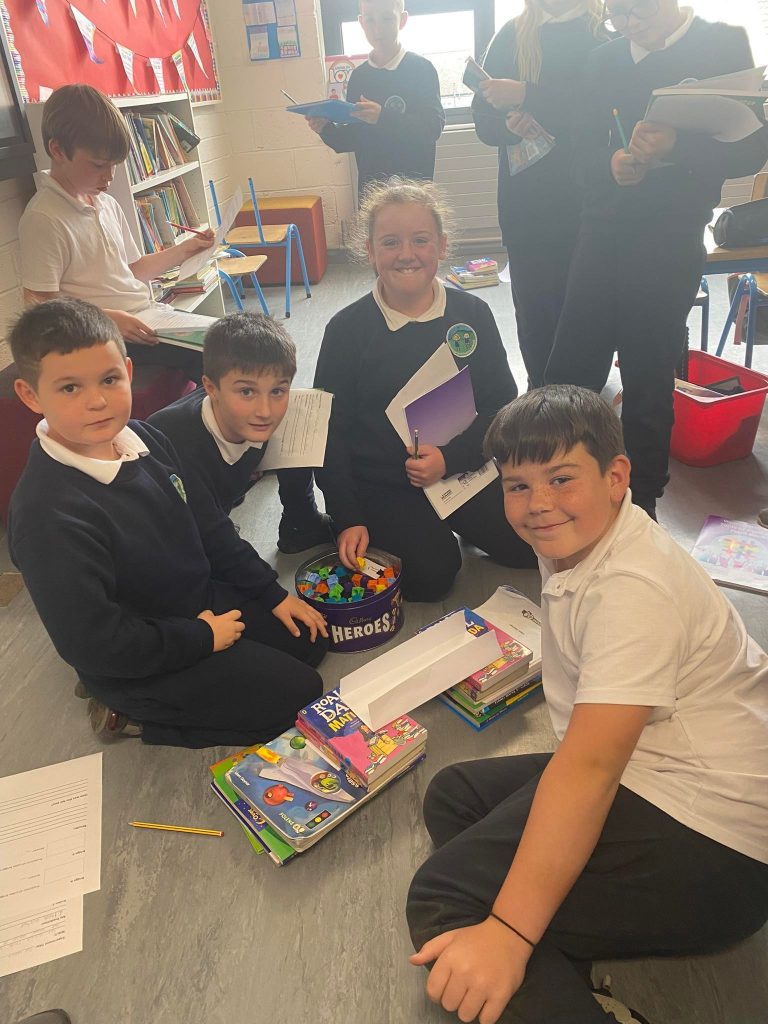
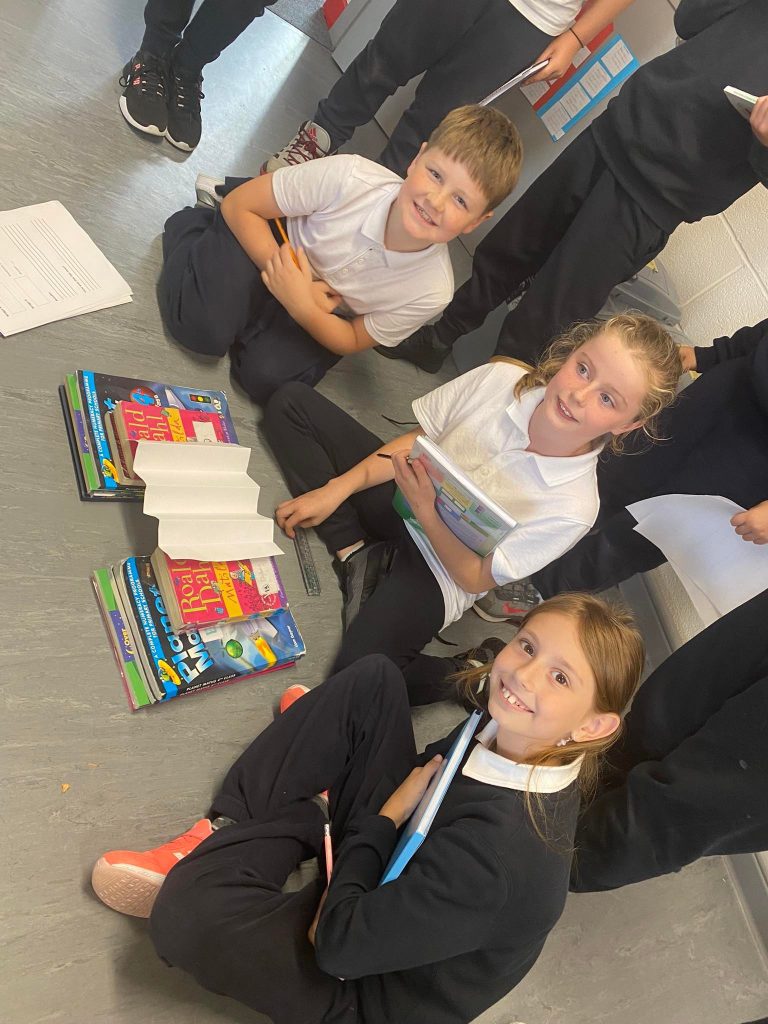
We made this a fair test by all using the same type and amount of books. We also kept the distance between the books at 15cm.
Our results found the walled bridge was strong, the arched bridge was stronger and the corrugated bridge was the strongest.
We have been researching and writing about our sporting heroes! We created a podcast to tell you about who we chose! We hope you enjoy this episode!
First class were constructing boats as part of a STEM challenge this week. To begin we decided to test different items to see if they would float or sink. Here are some pictures that show our test:
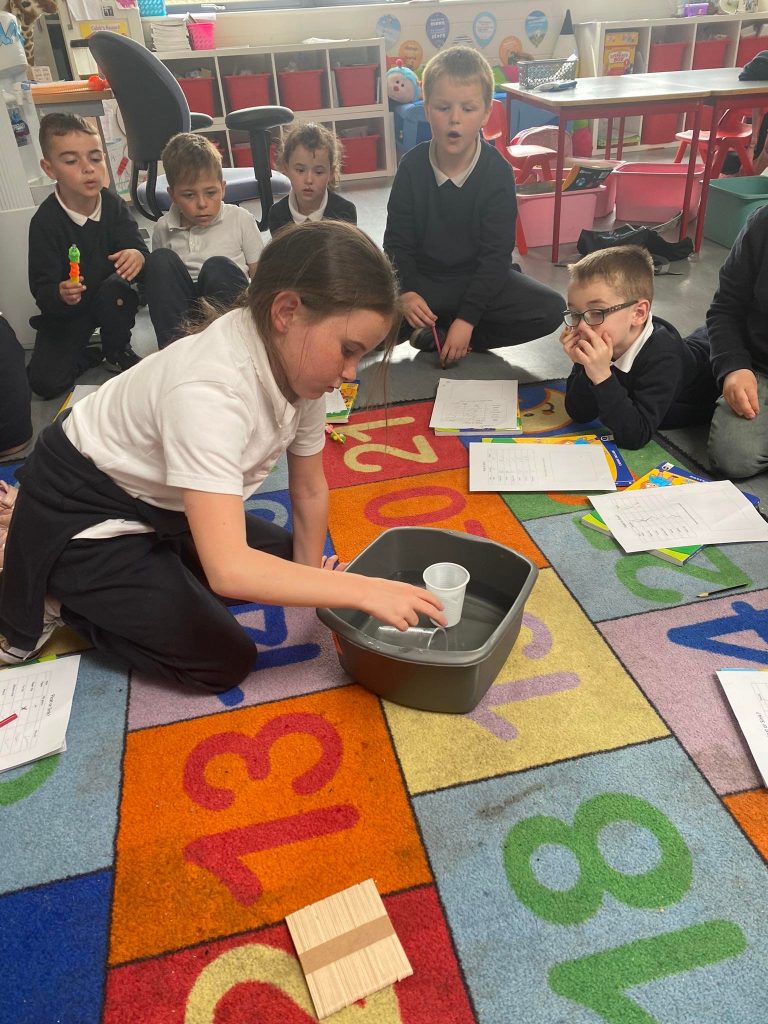
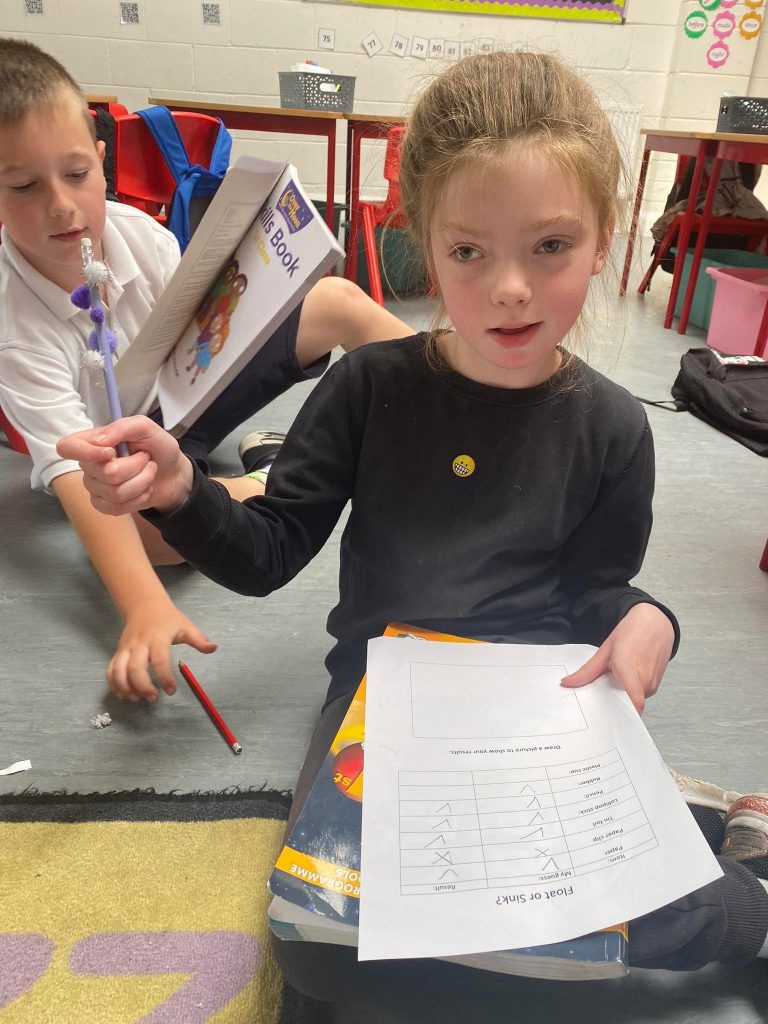
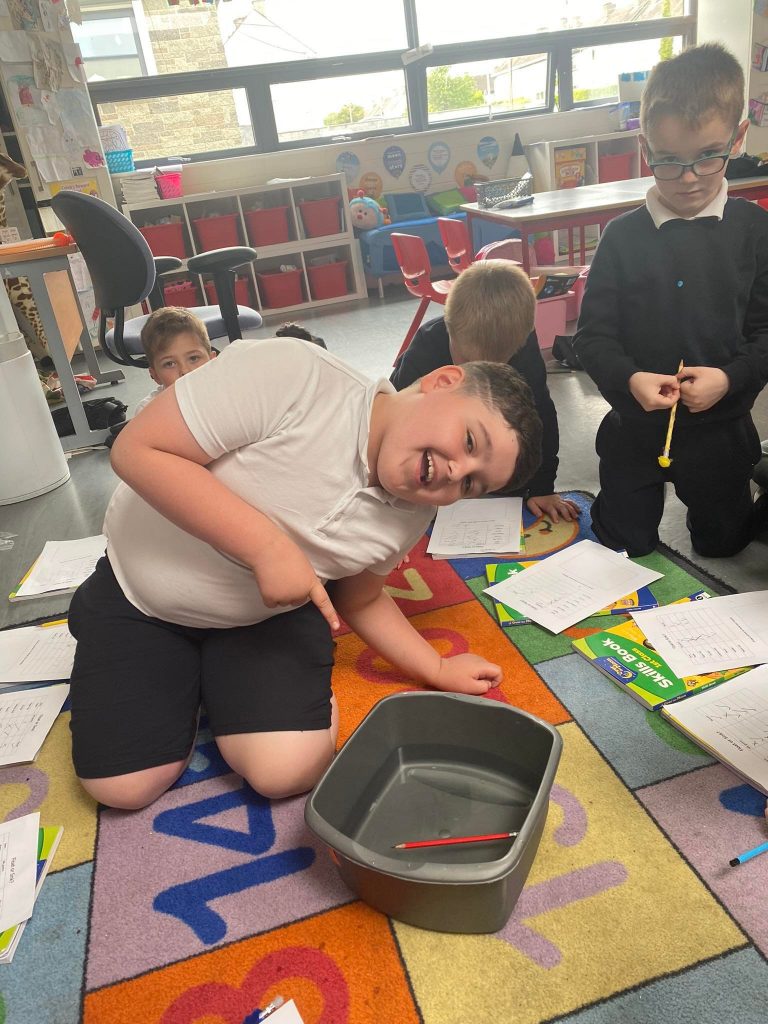
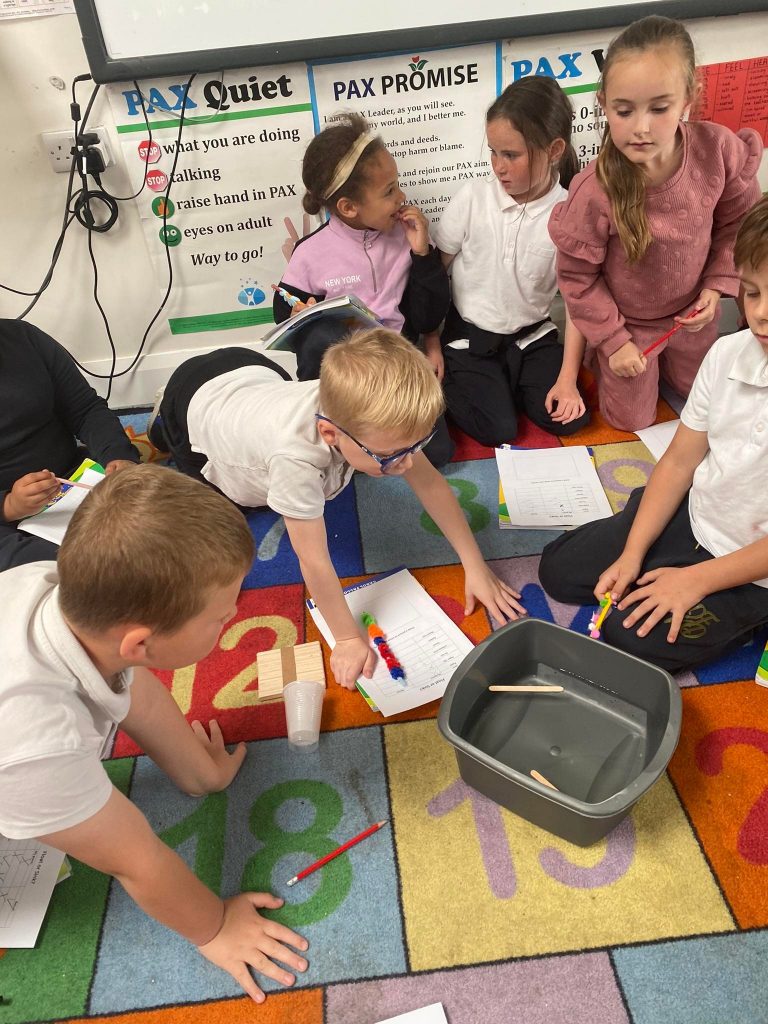
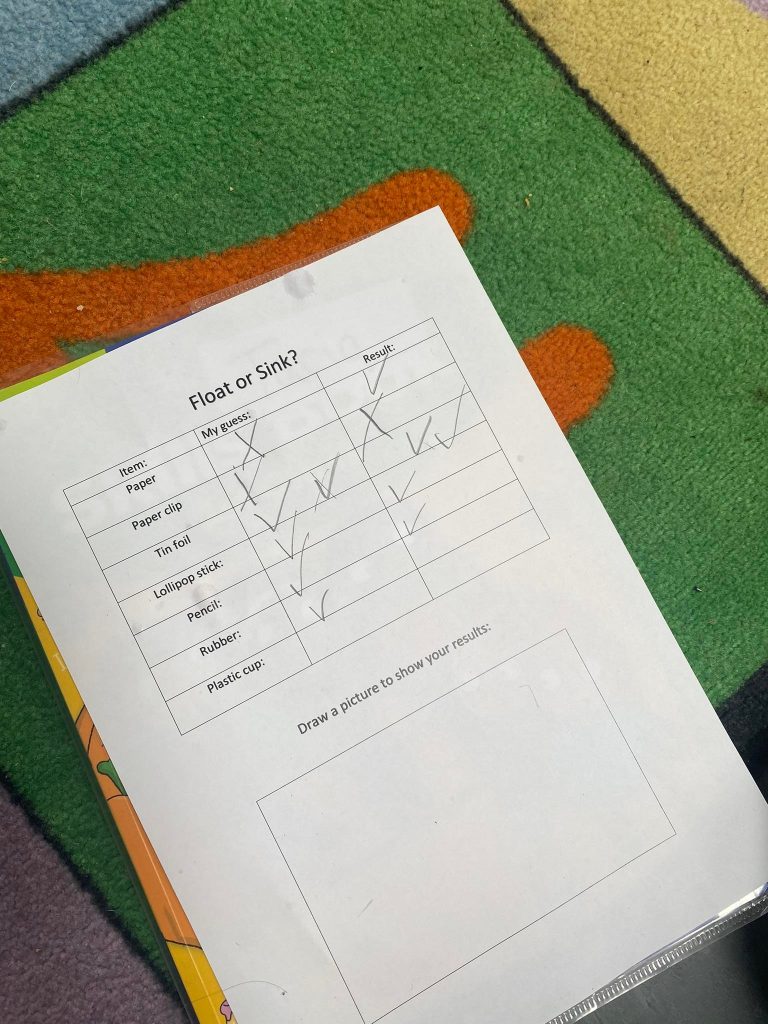
After this first class started to make a plan in groups of three to decide what materials they would use to build their boats.
The boat had to hold a trailer and stay afloat for 10 seconds. All of the boats were successful and passed the STEM challenge. Take a look at us designing and some of our finished products.
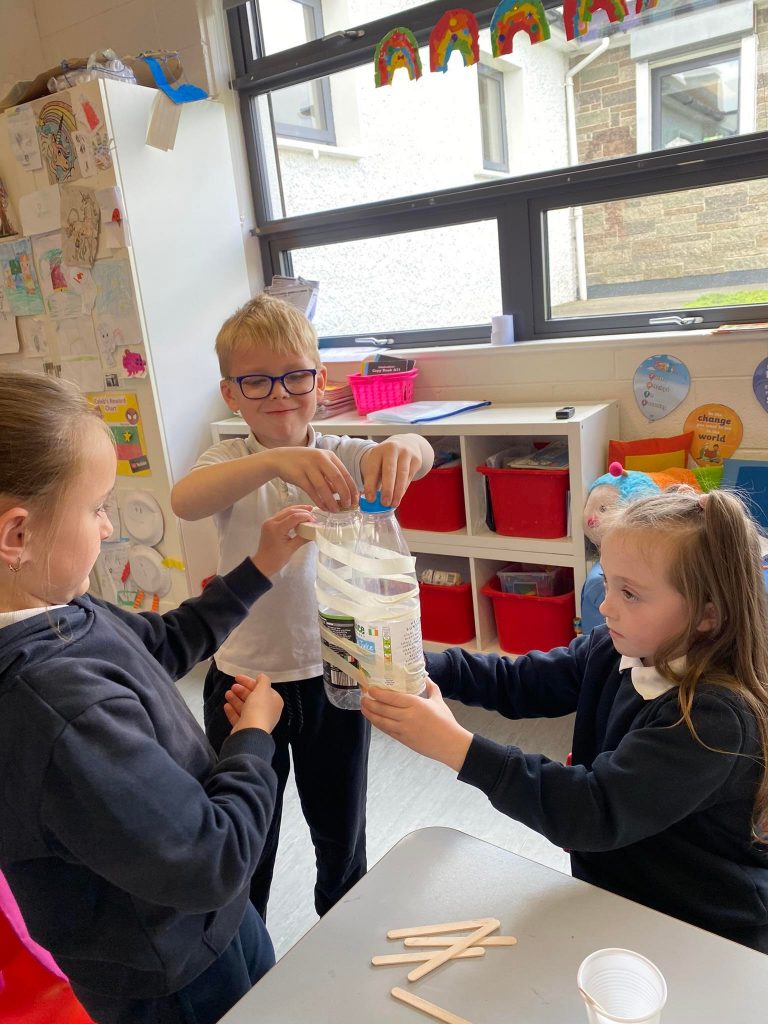
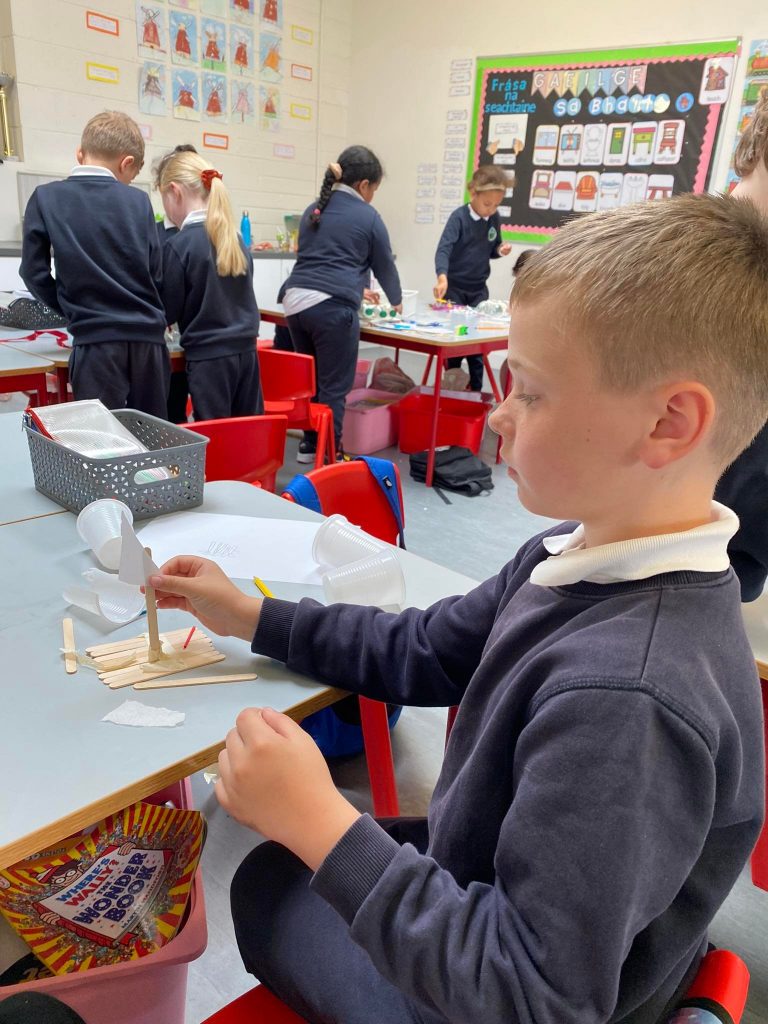
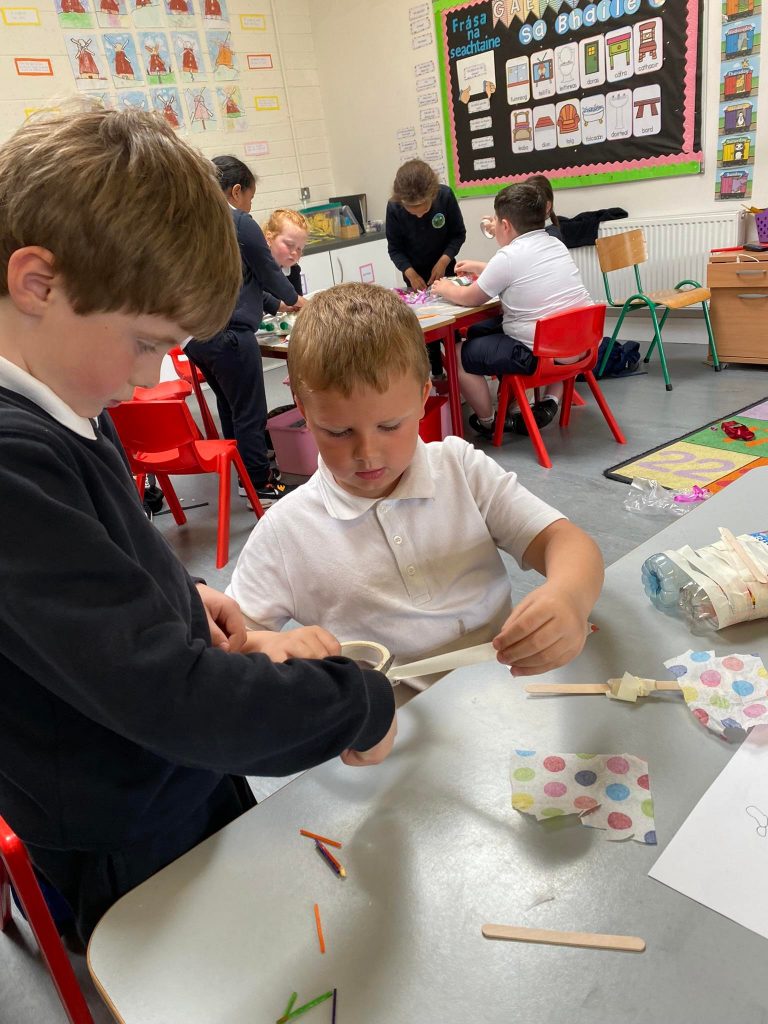
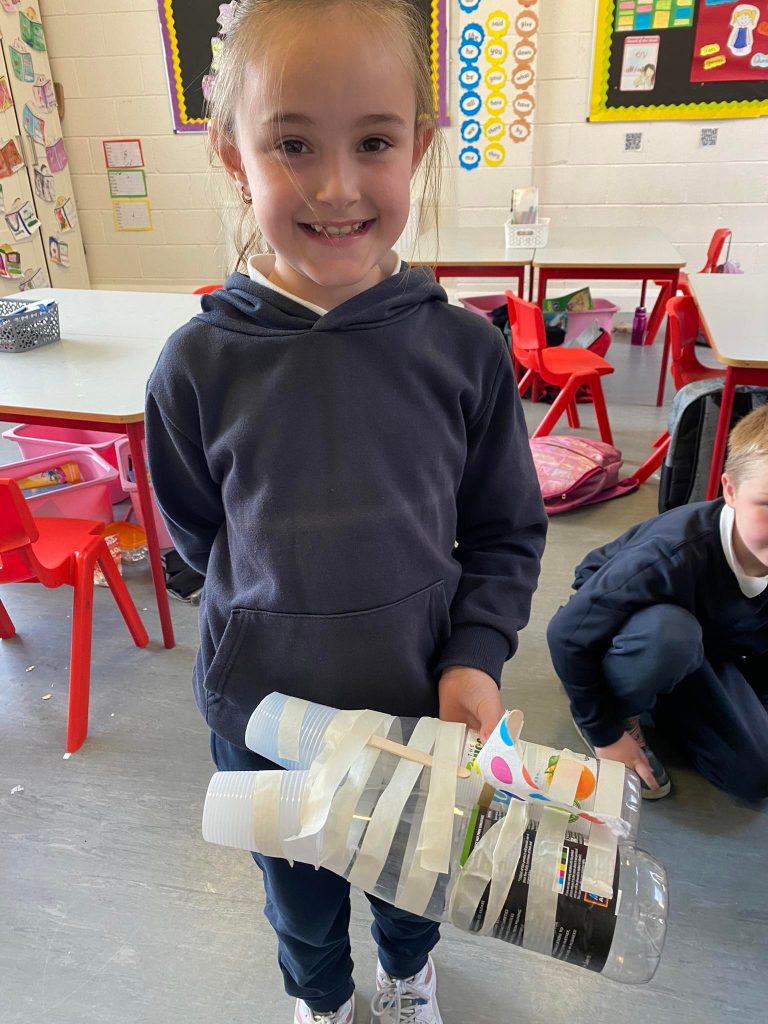
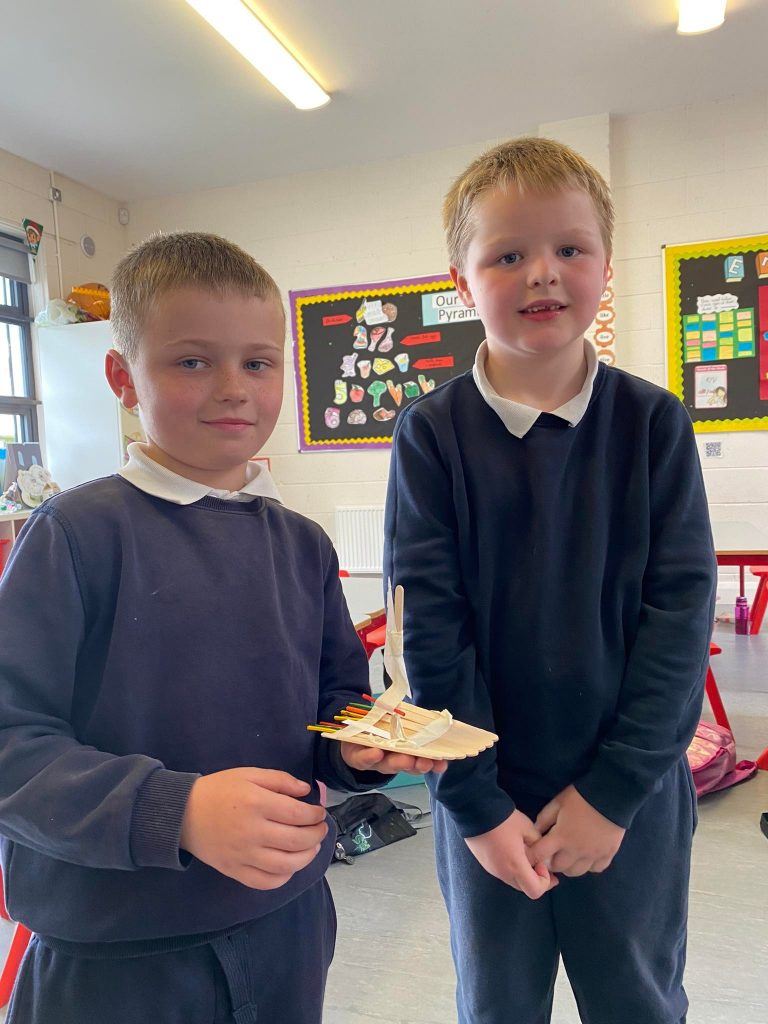
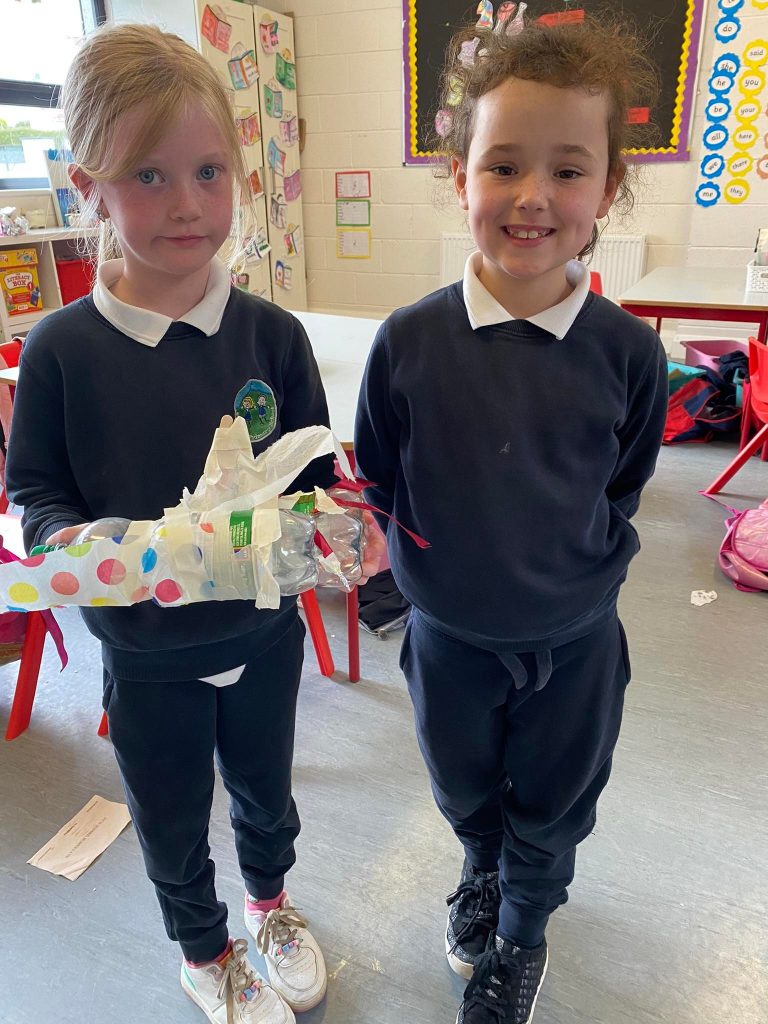
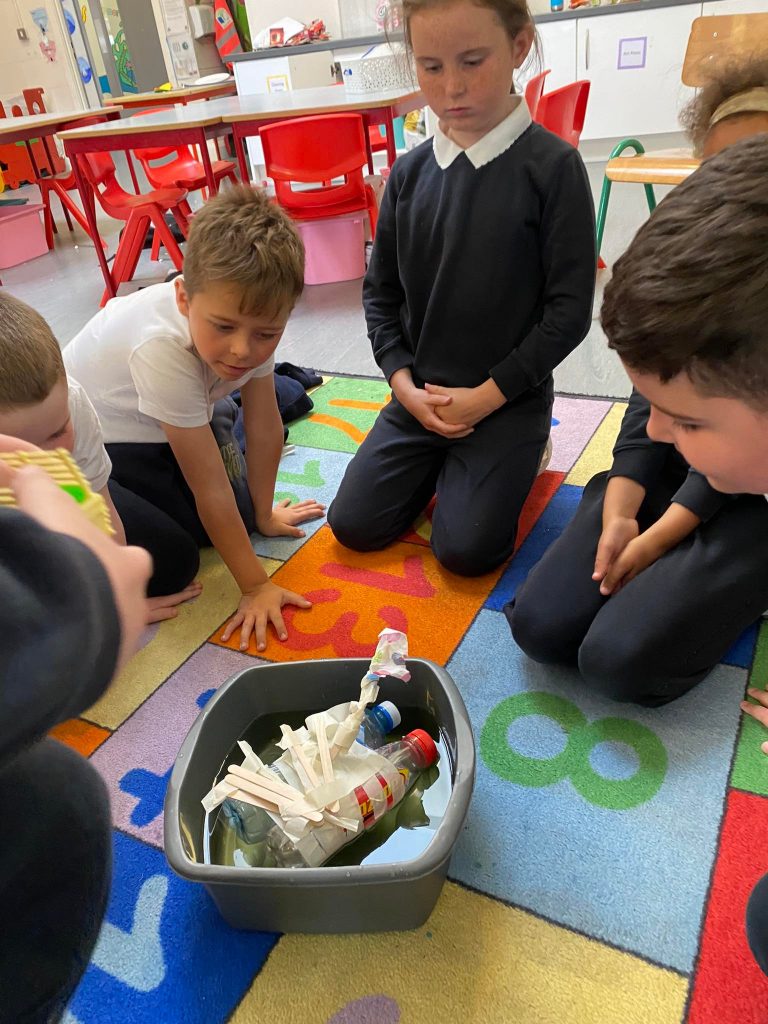
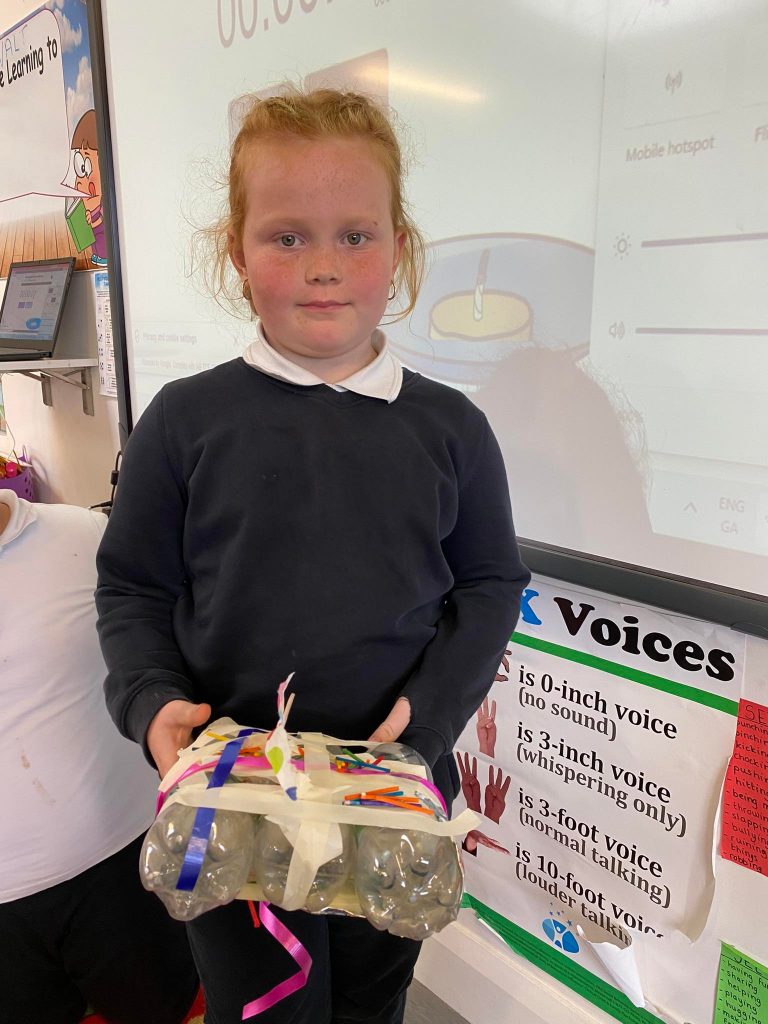
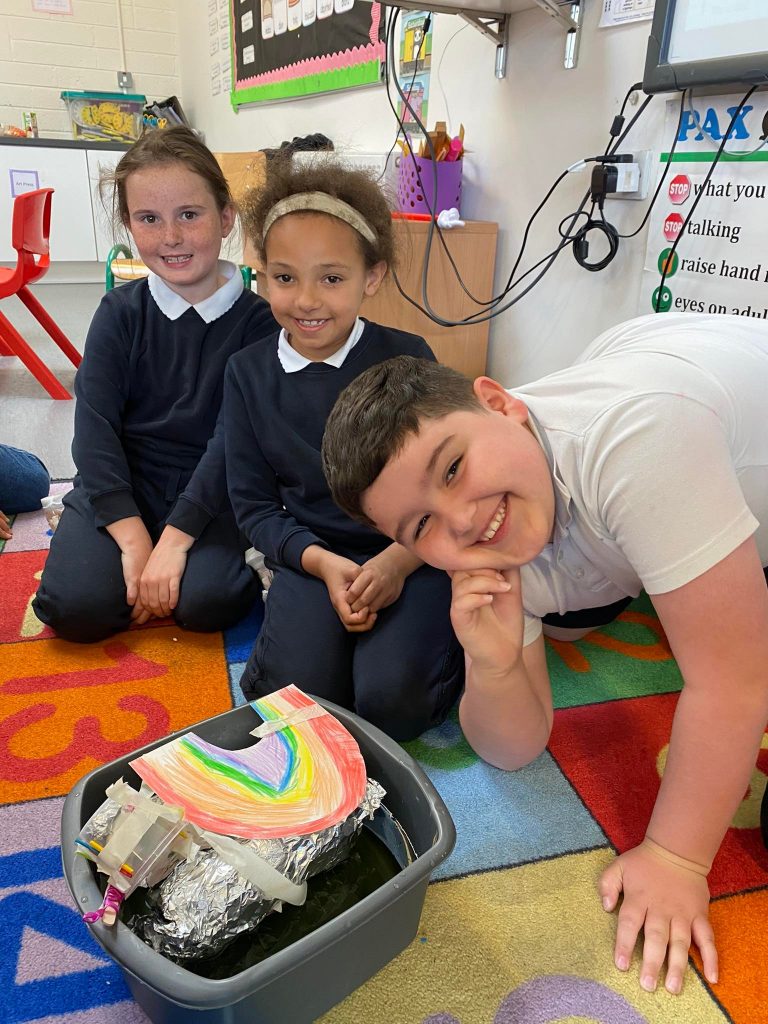
John Treanor, a building services engineer, came into 6th yesterday to teach the children all about motors. He is also a past pupil of Peters which was lovely. He knew they had a big interest in electric scooters and bikes, so they all made their own motor! We used magnets, batteries and a bolt. They really enjoyed it. Thanks a mil for coming in!

